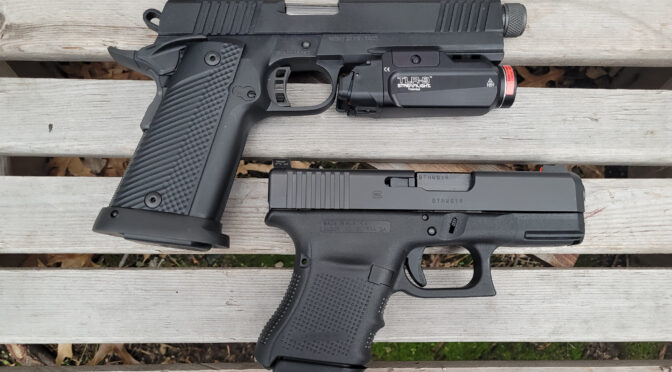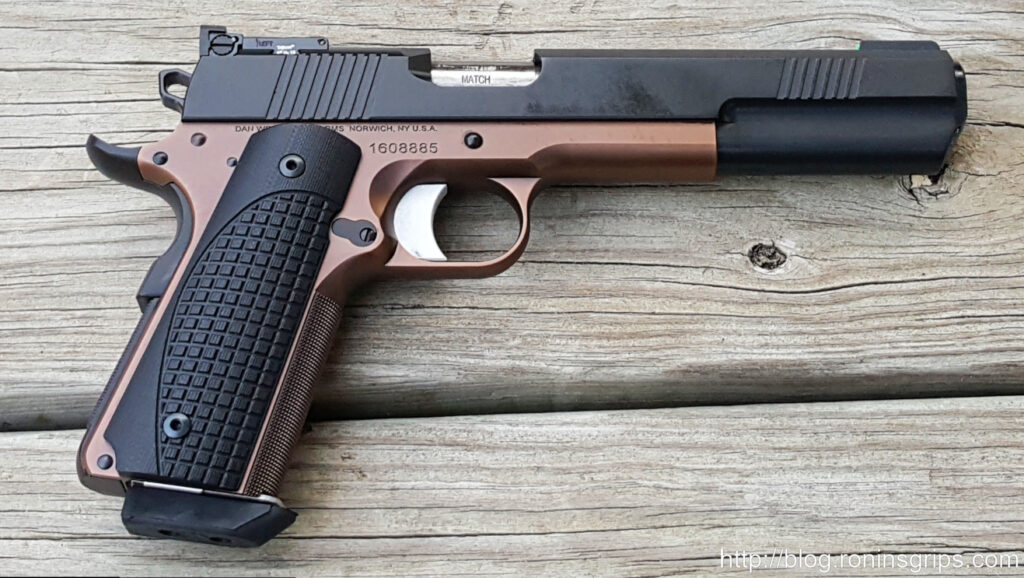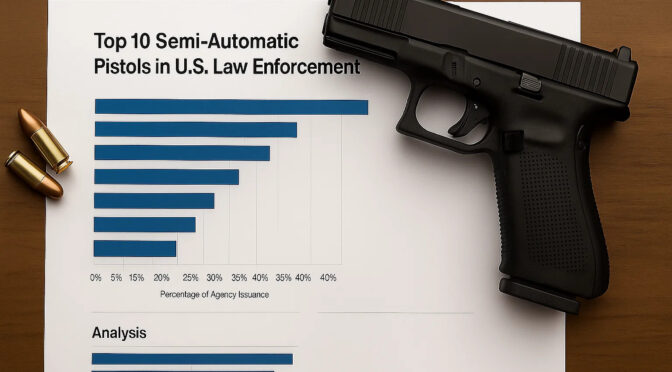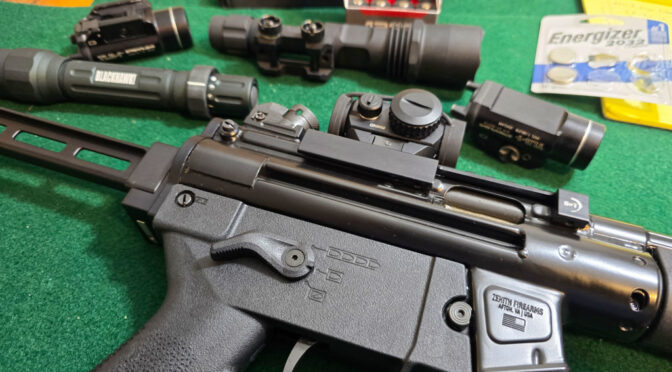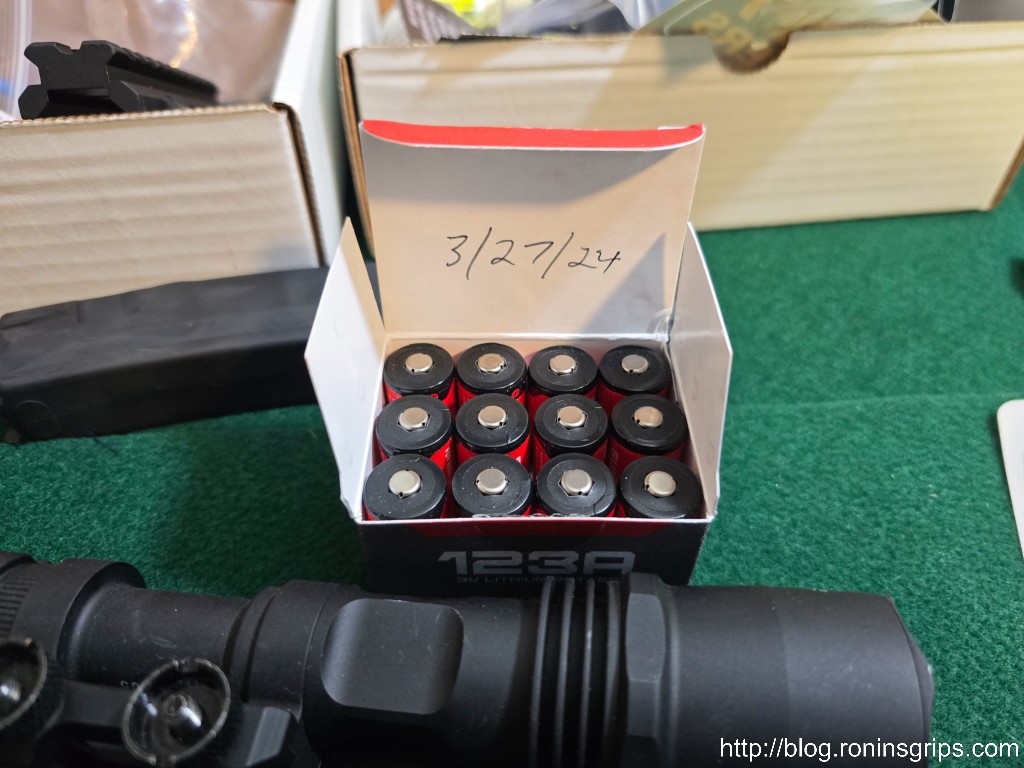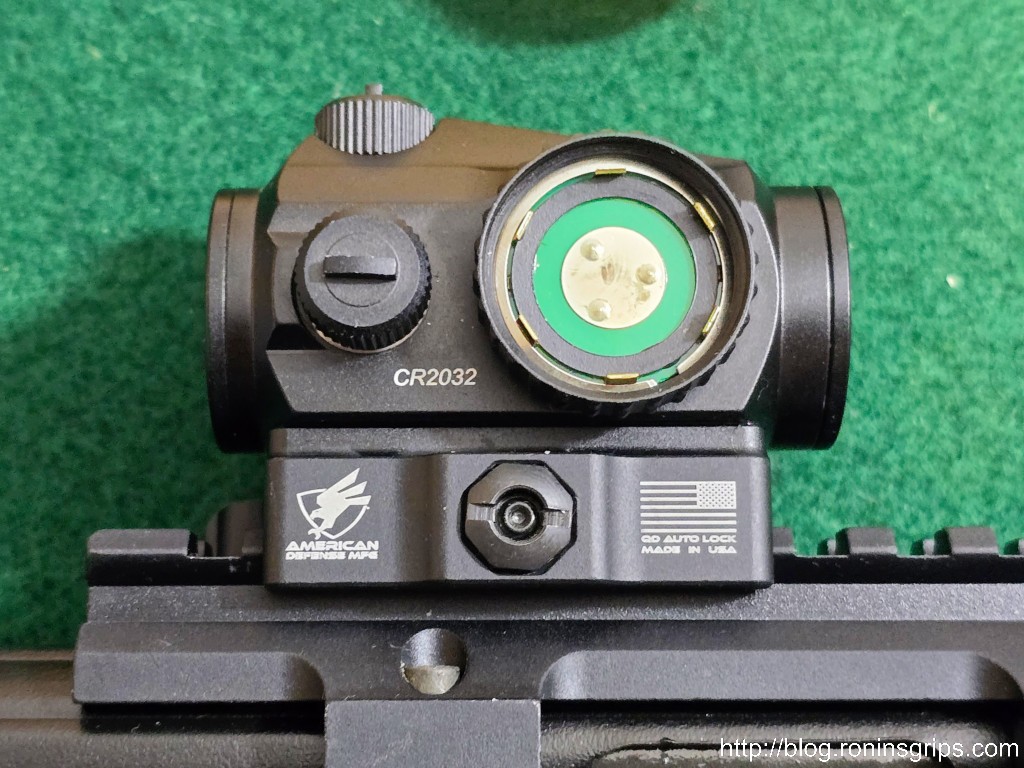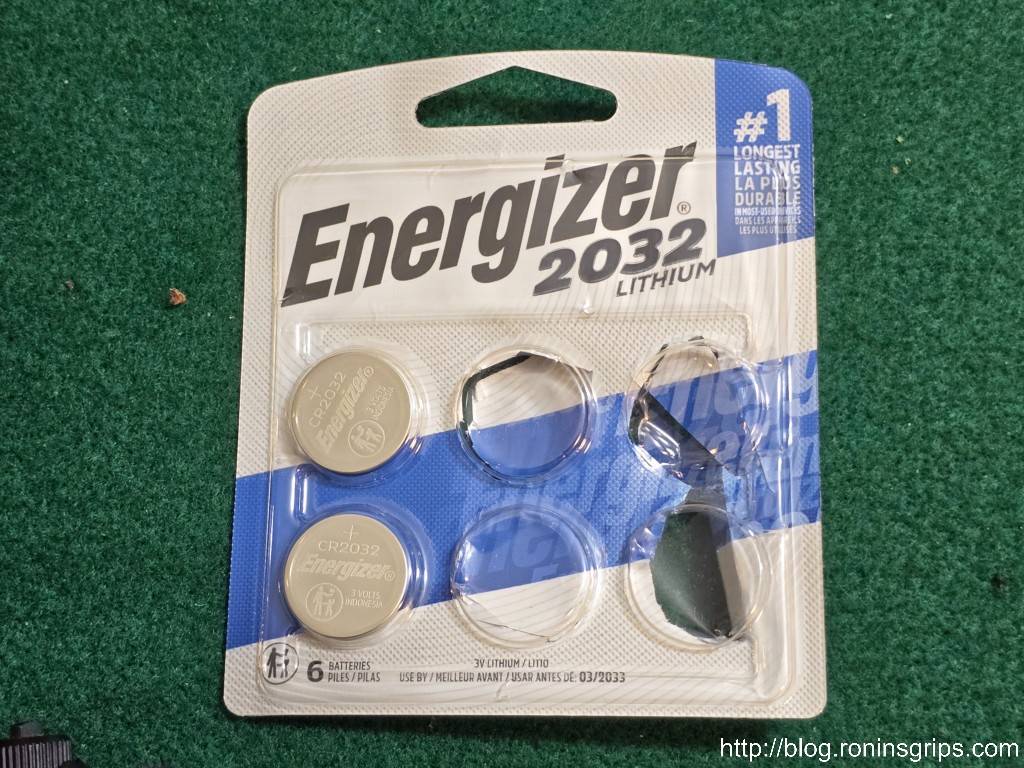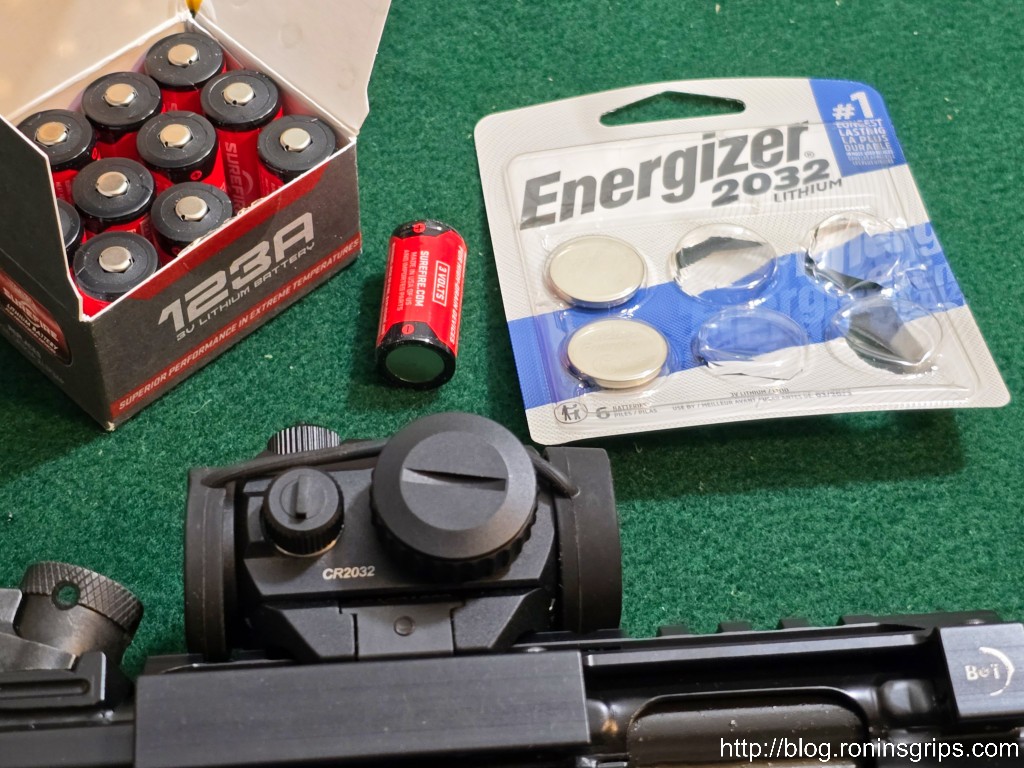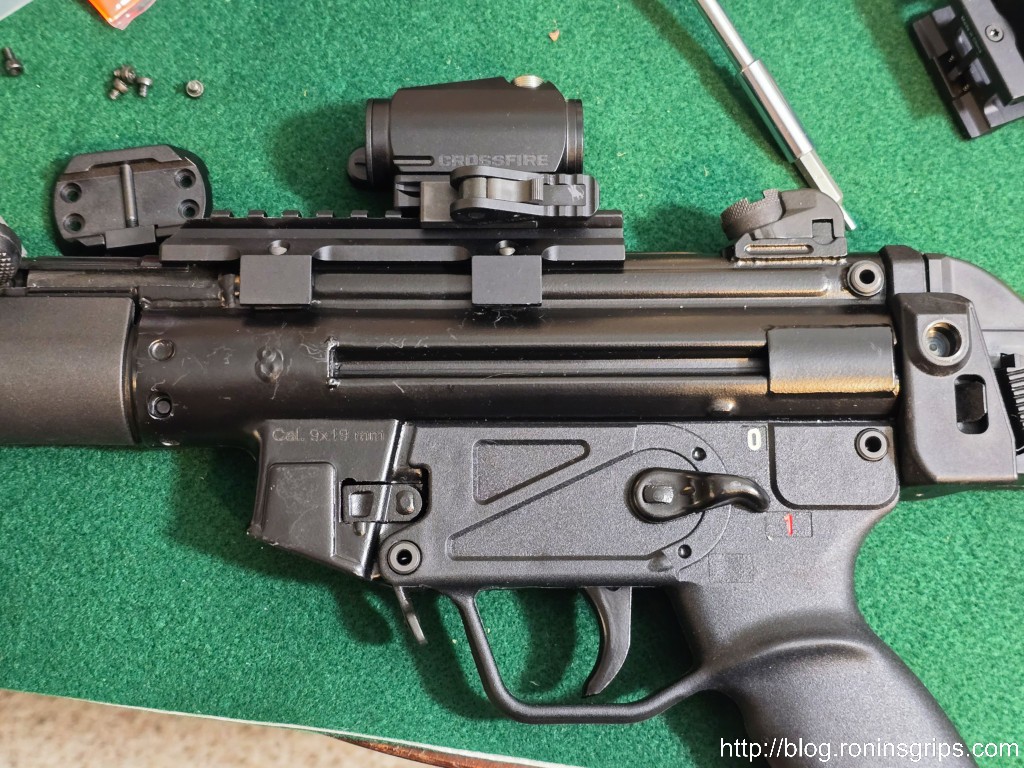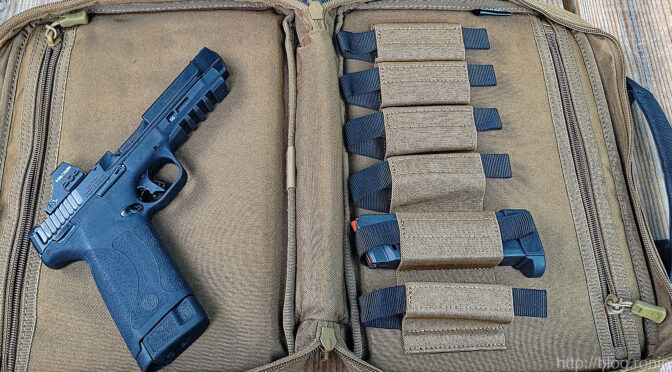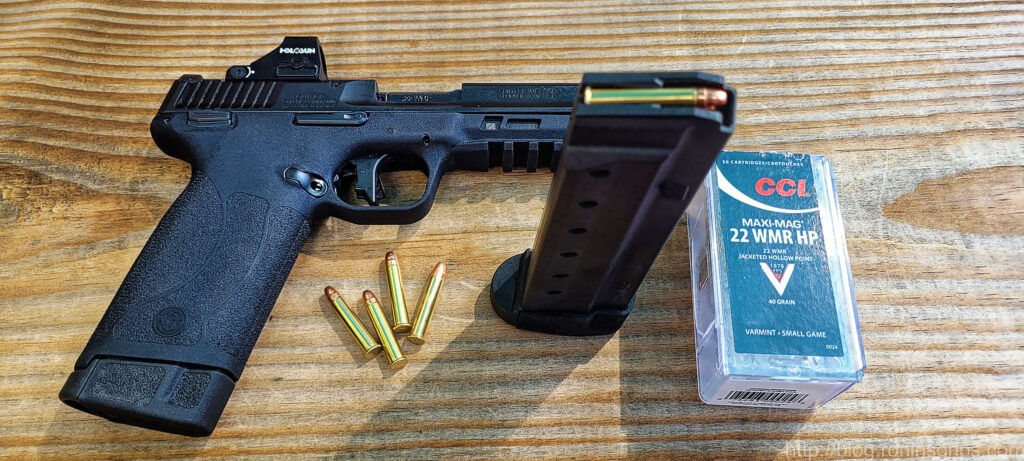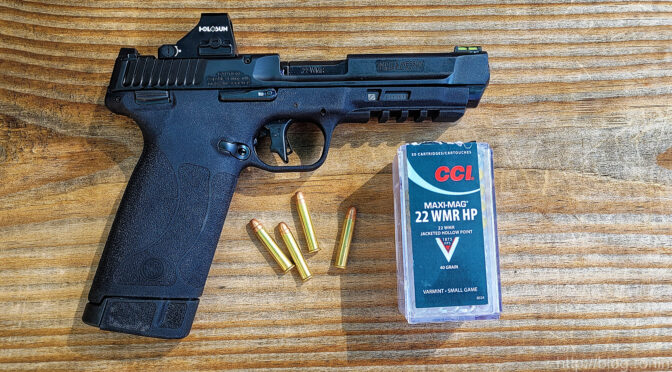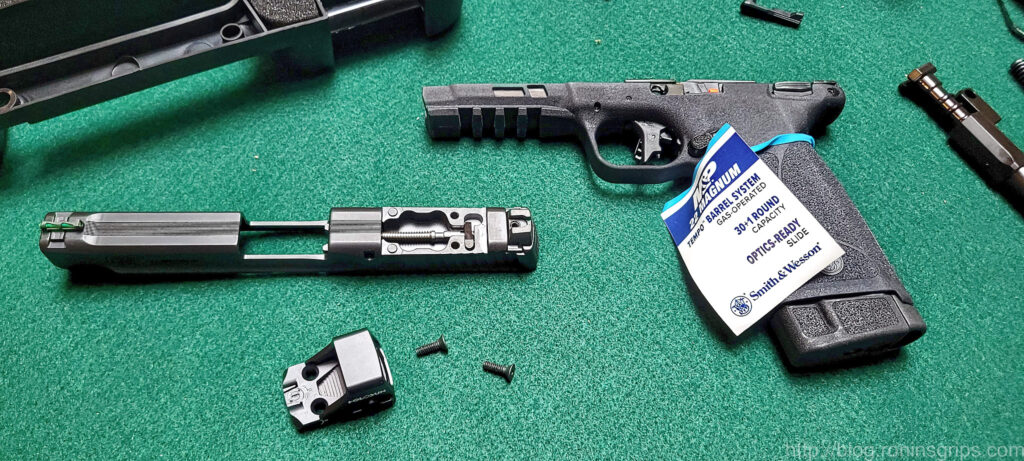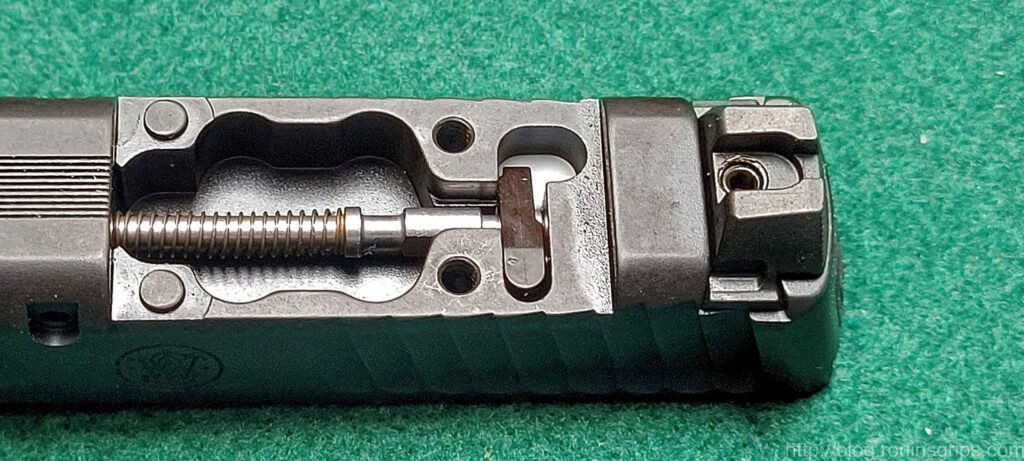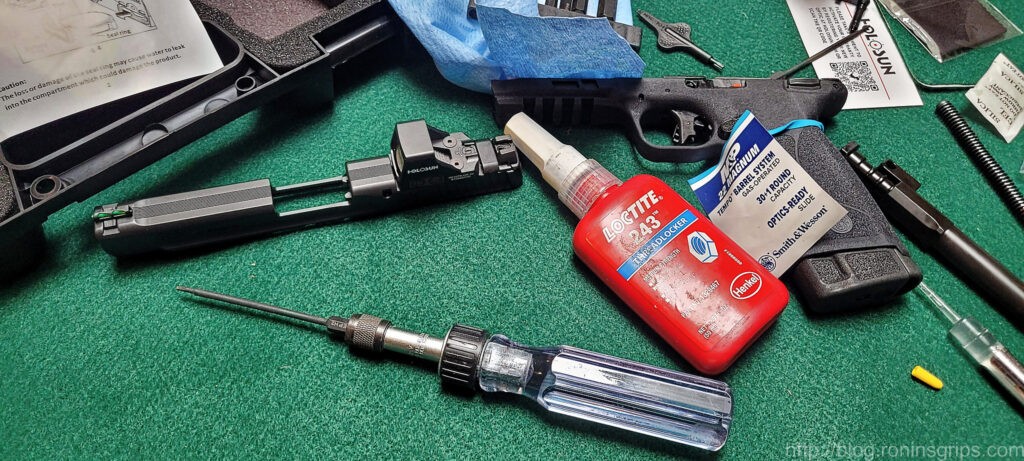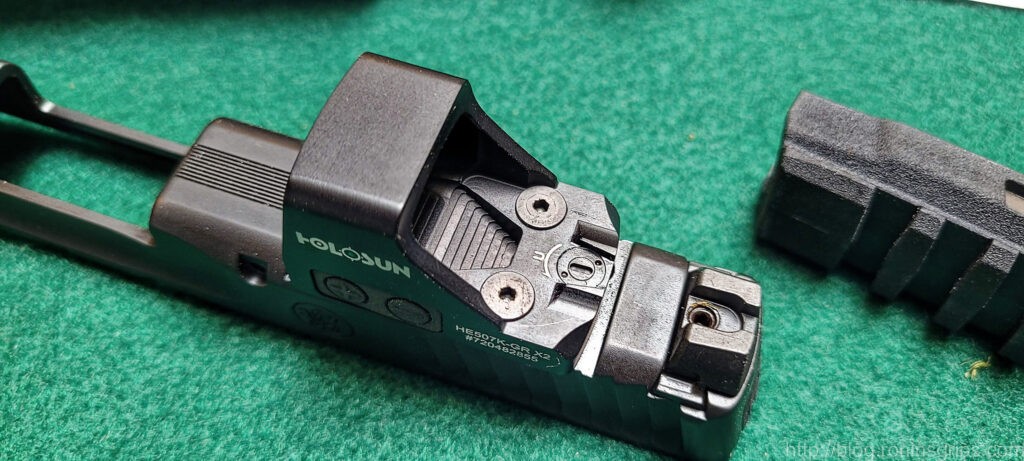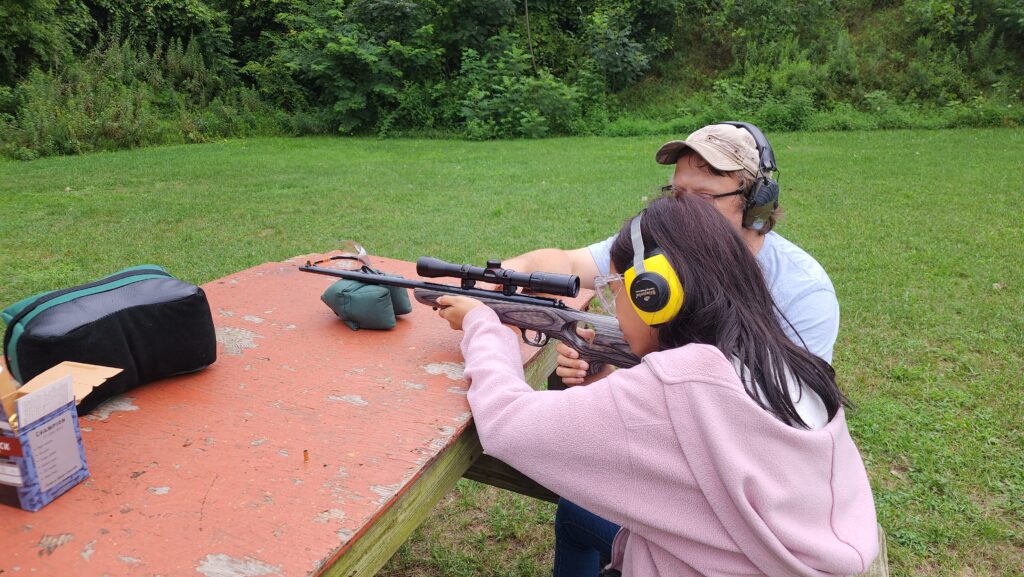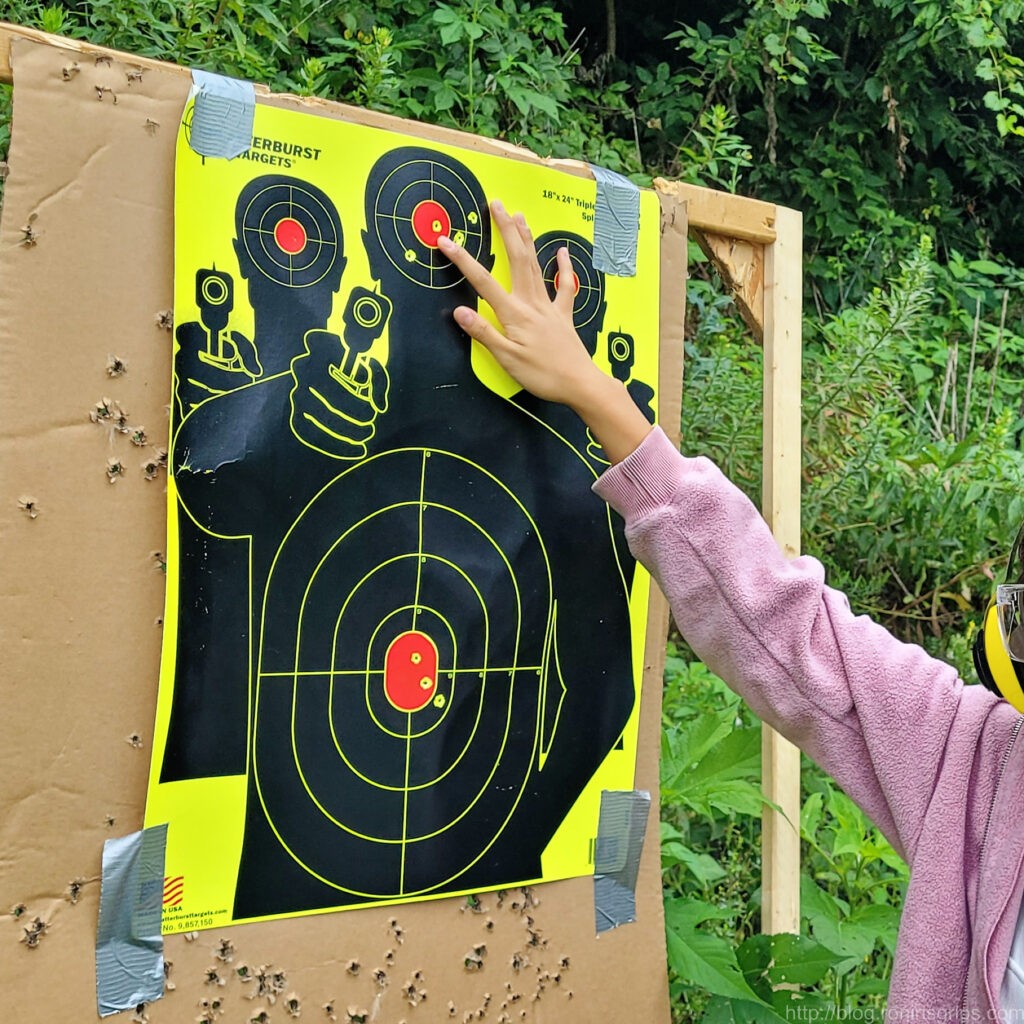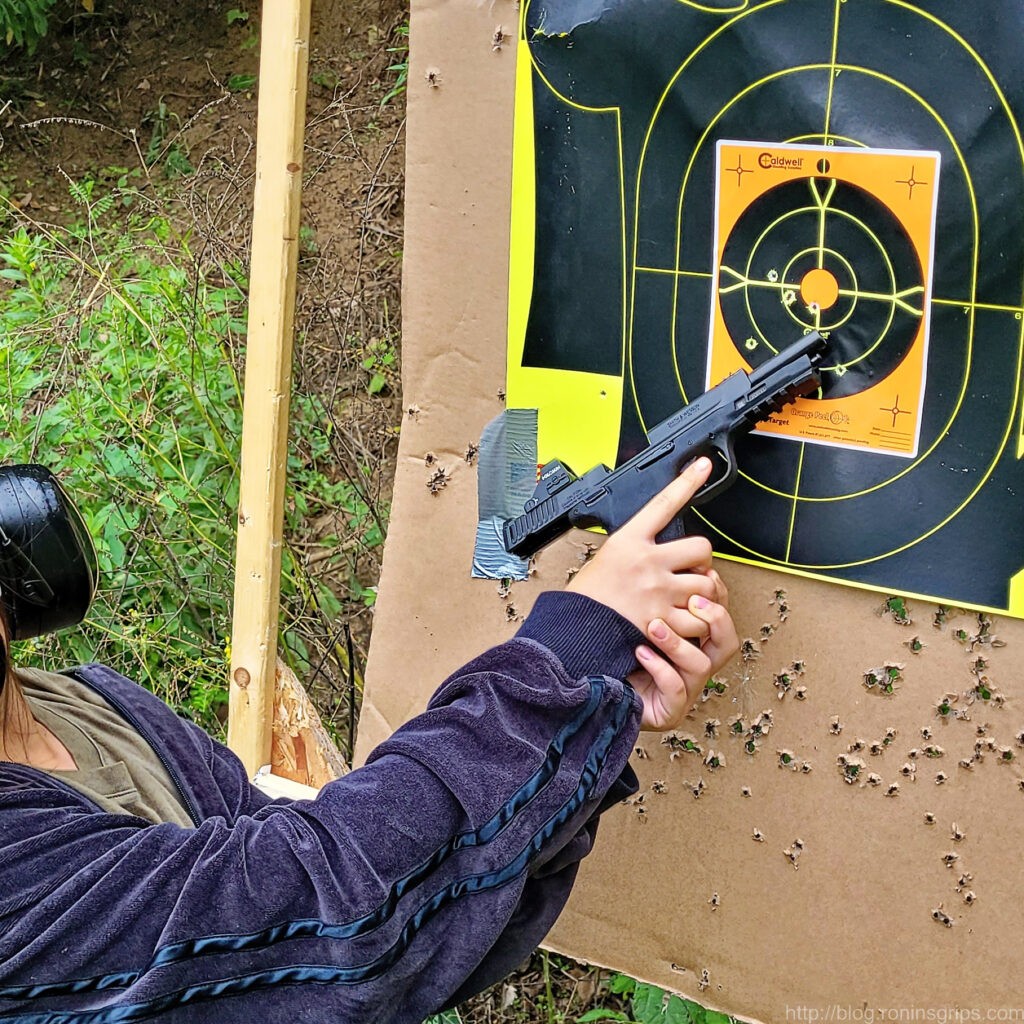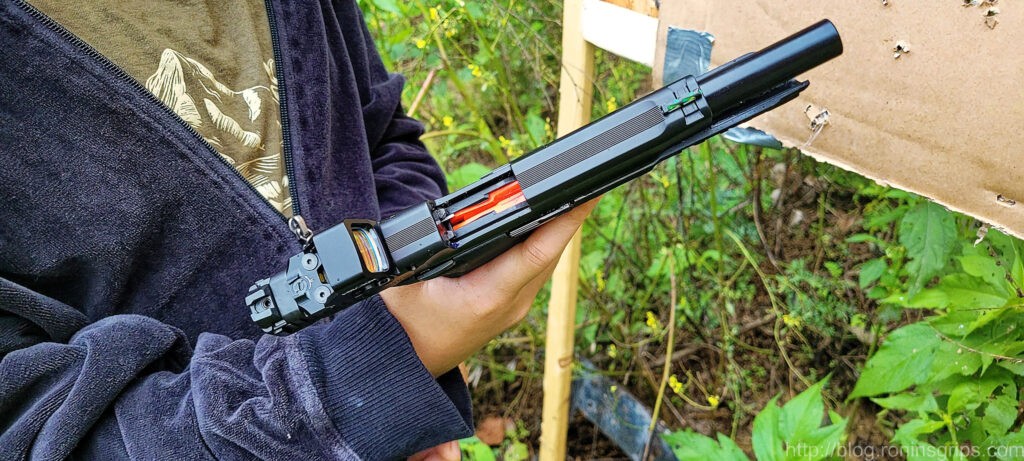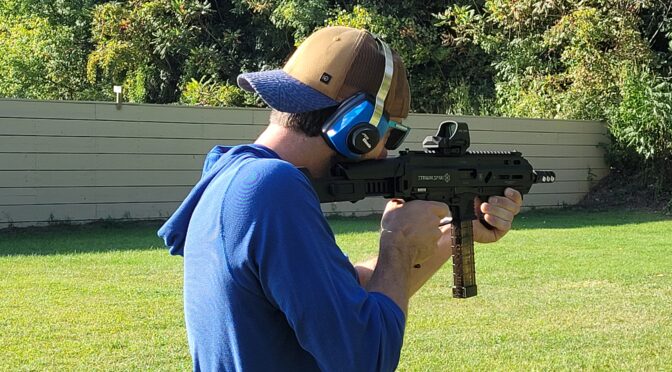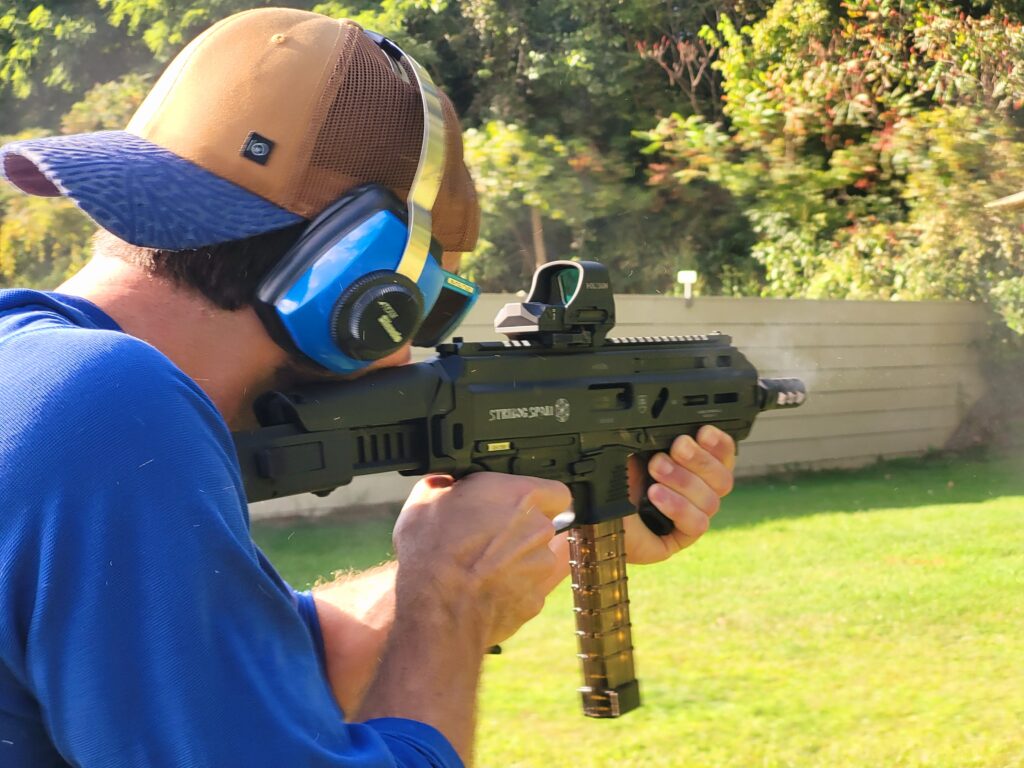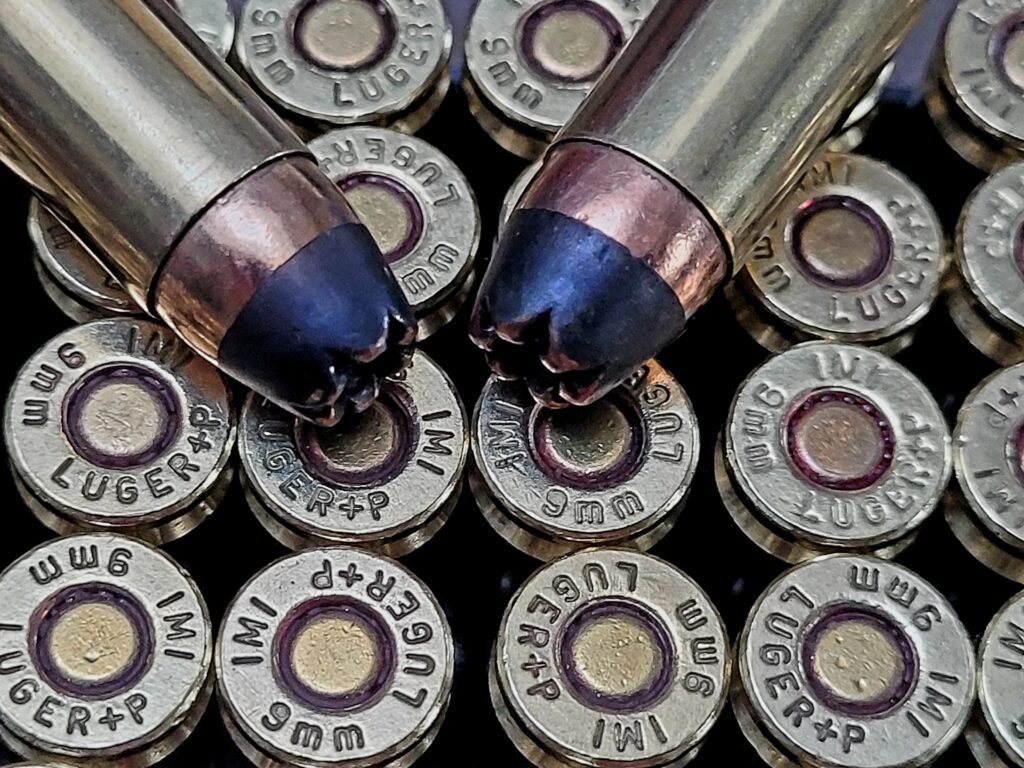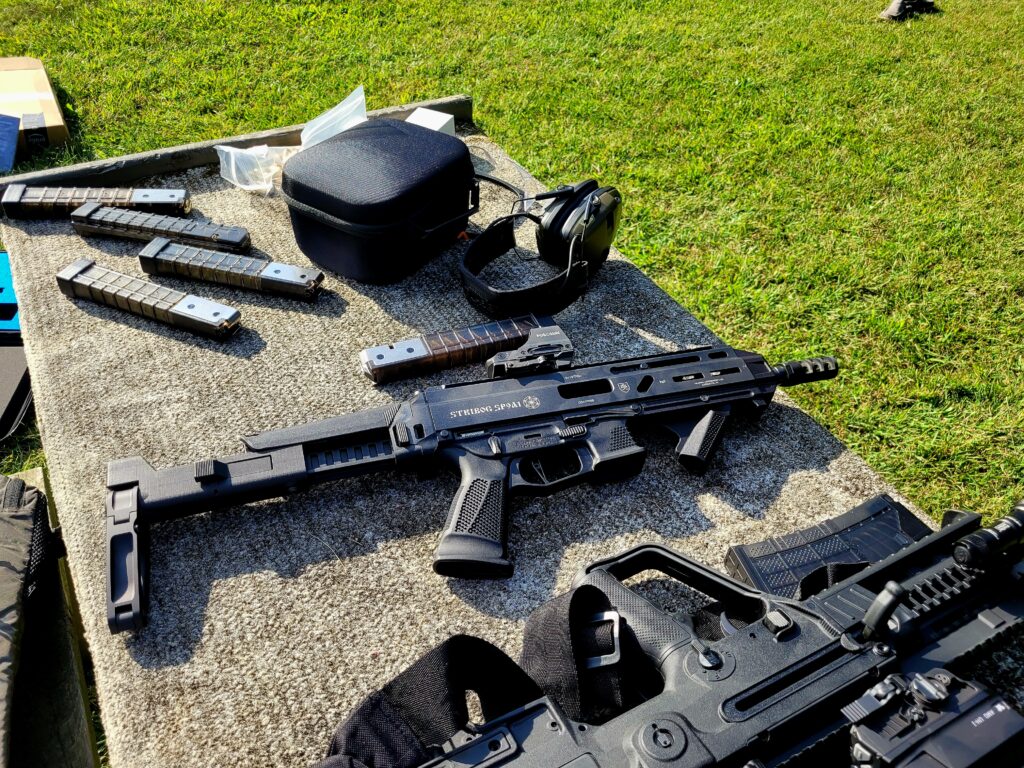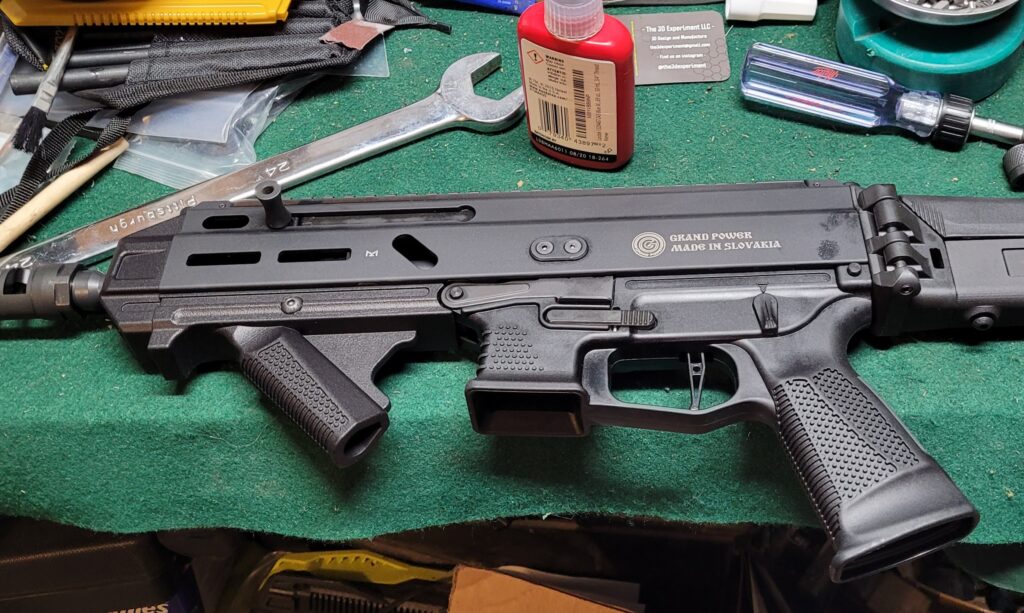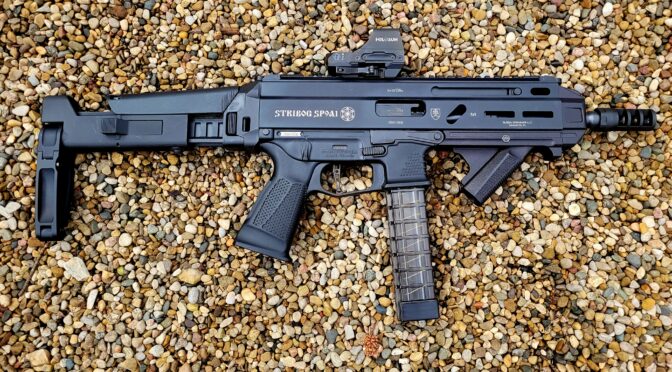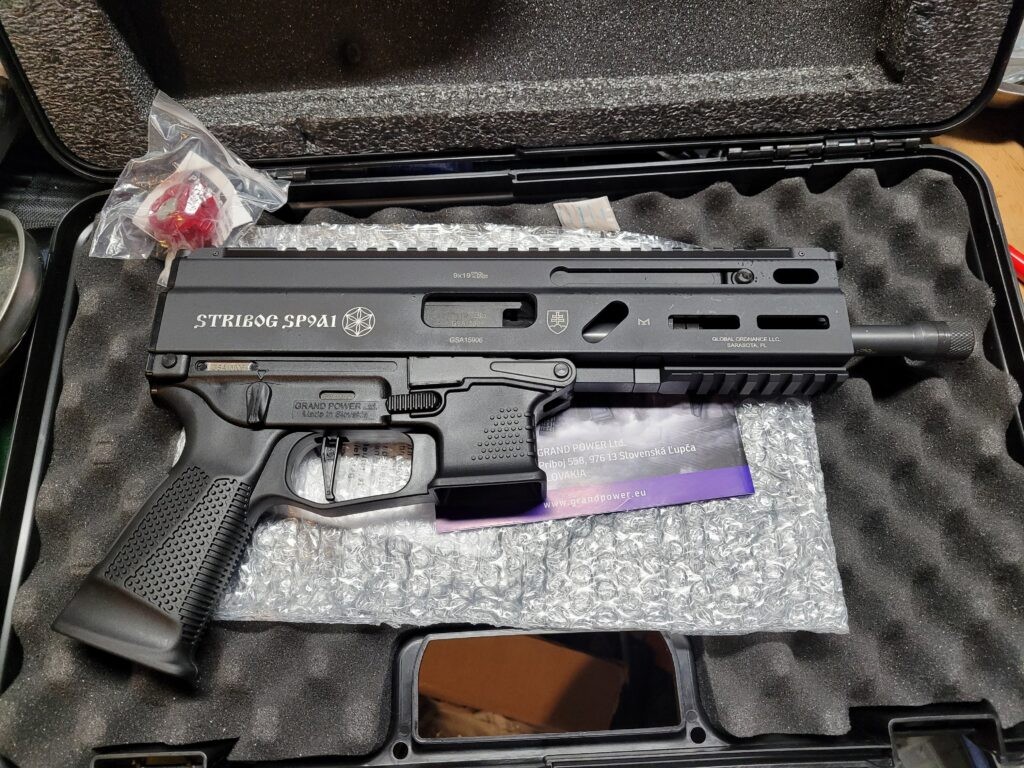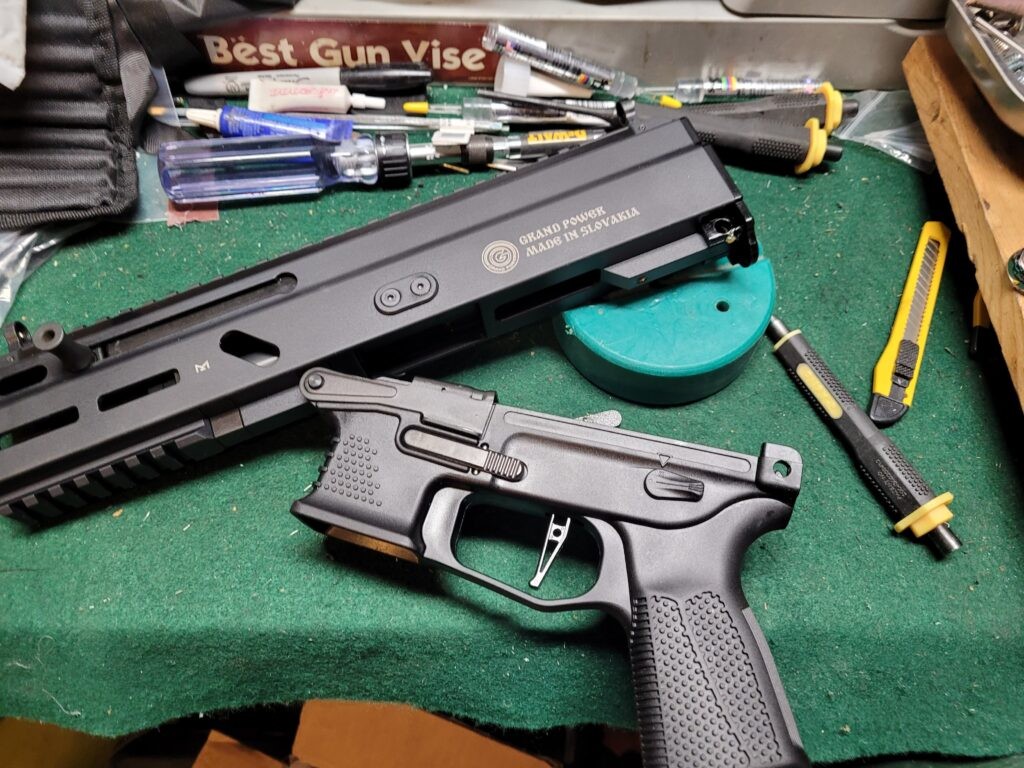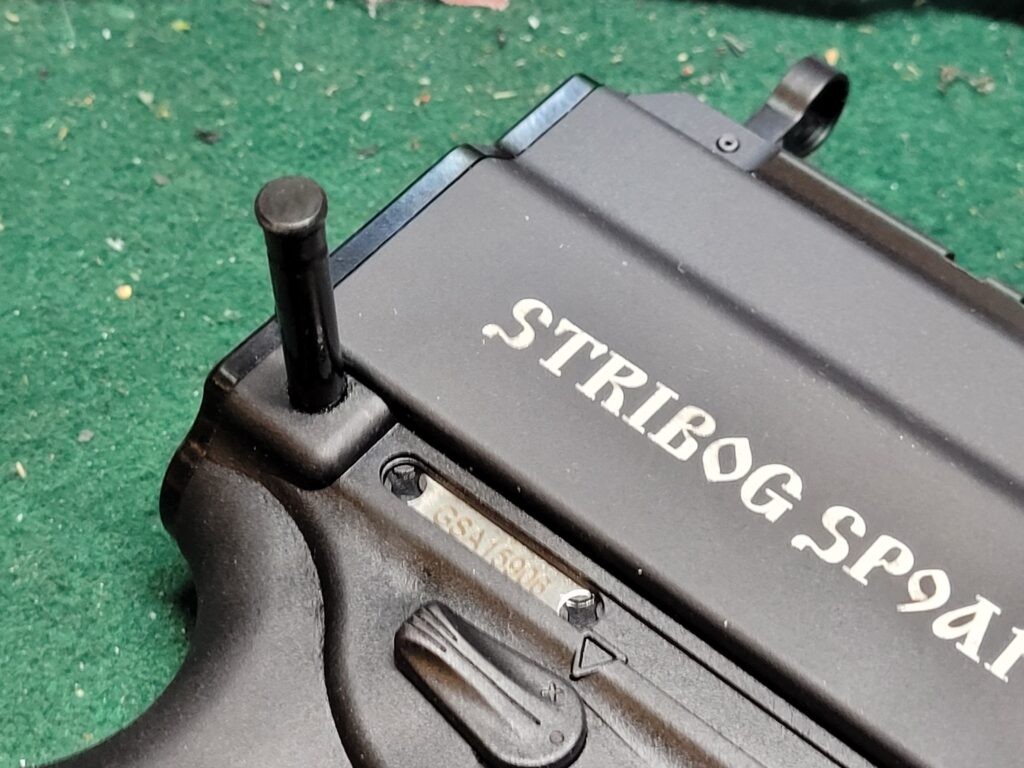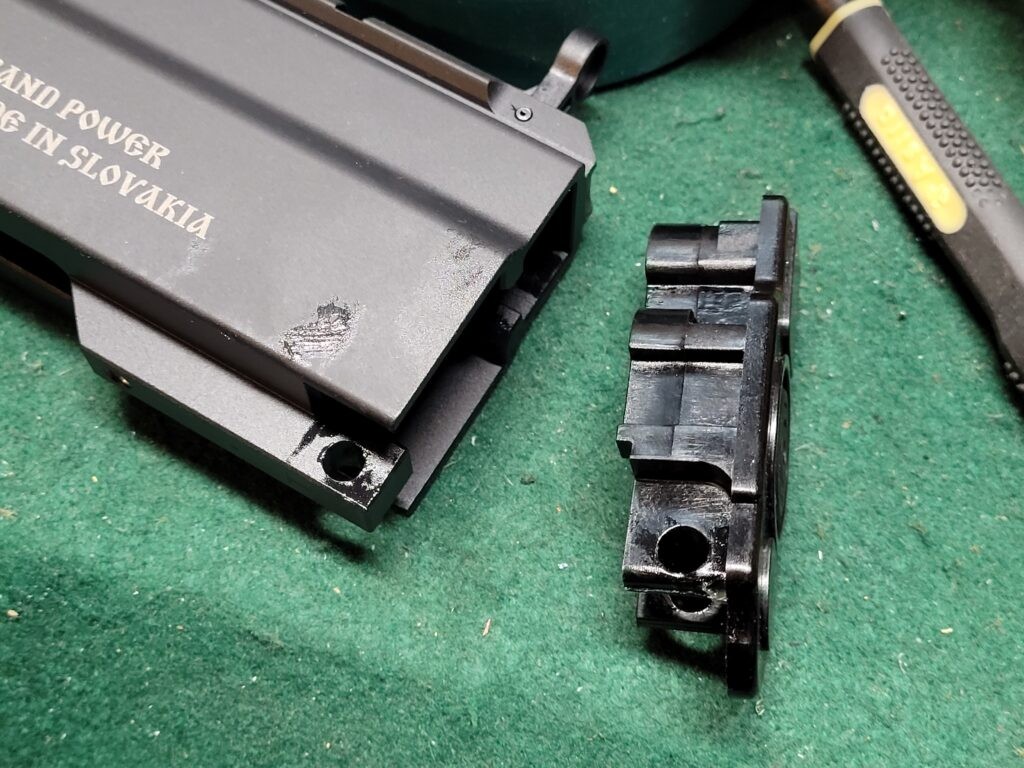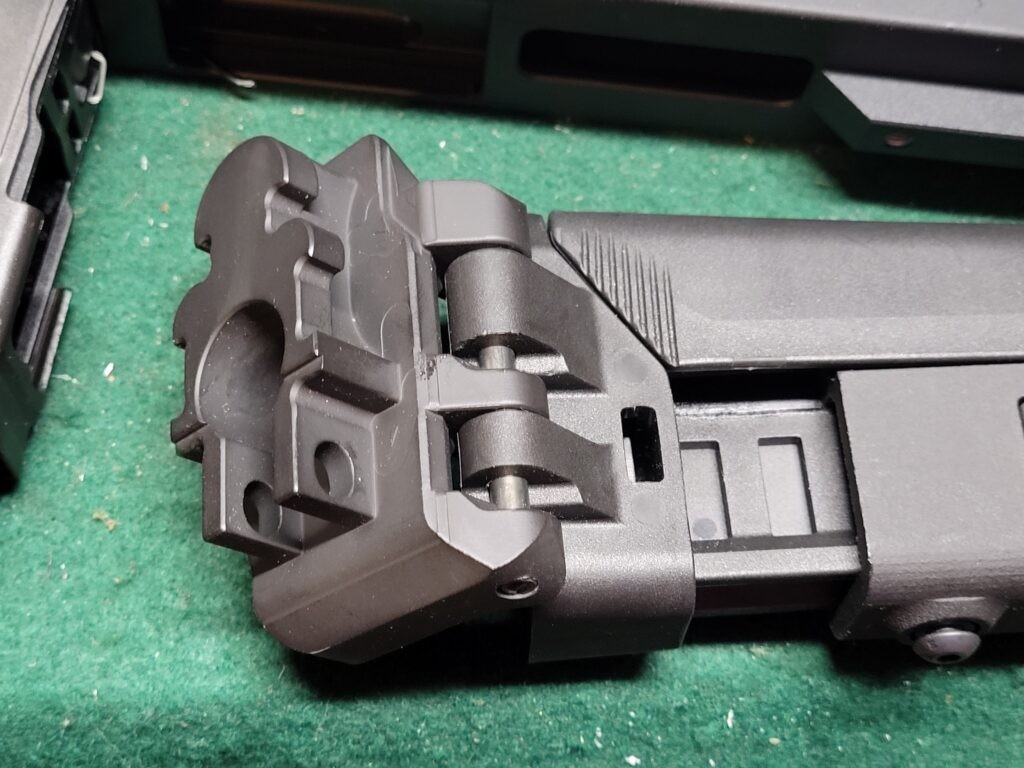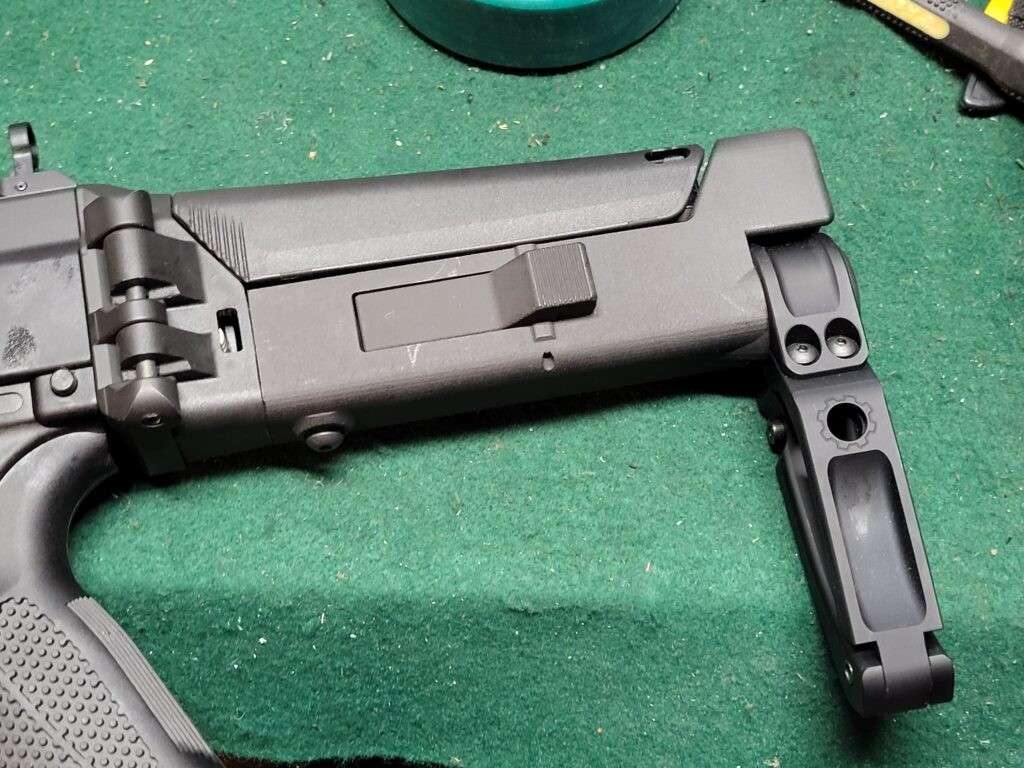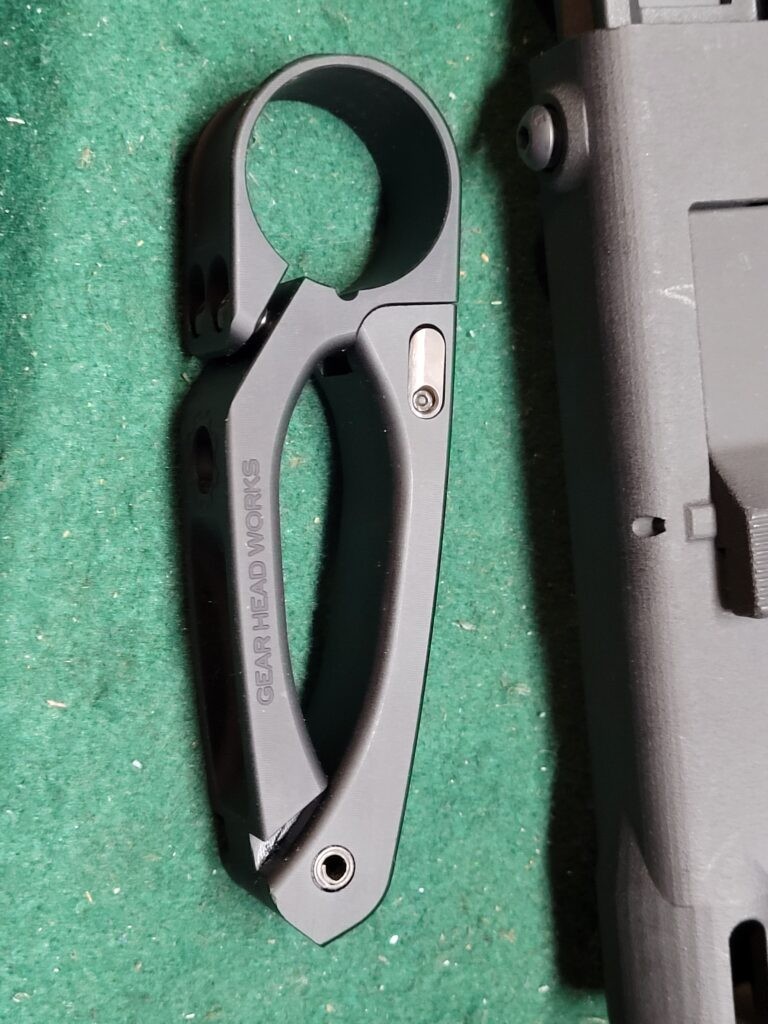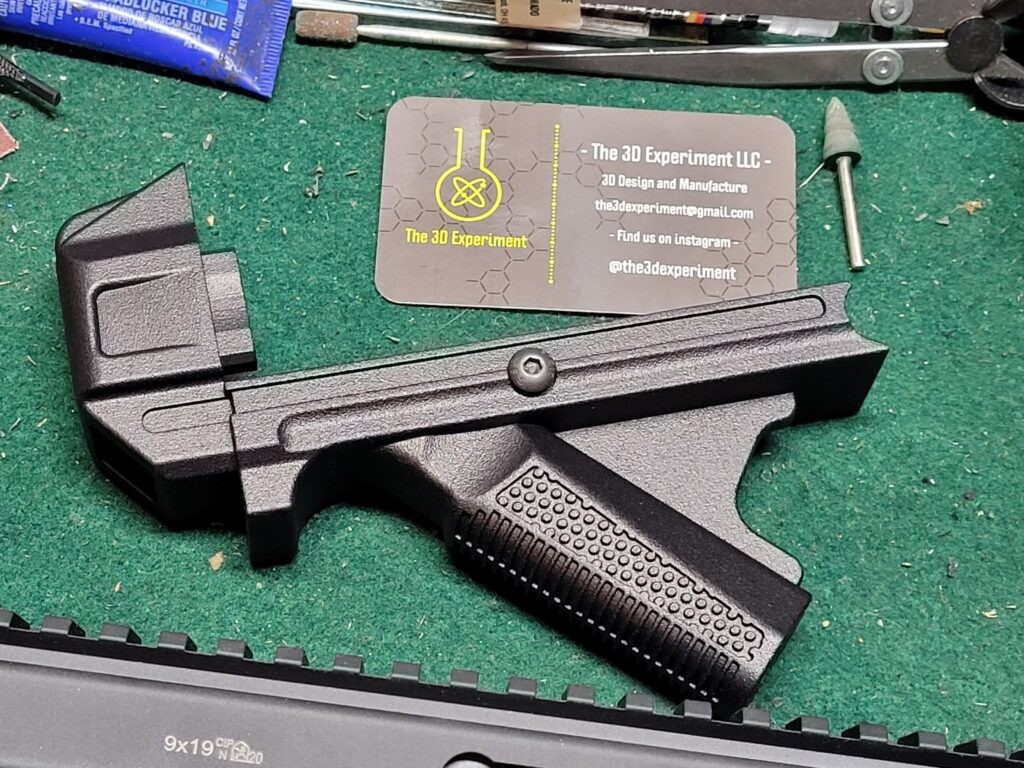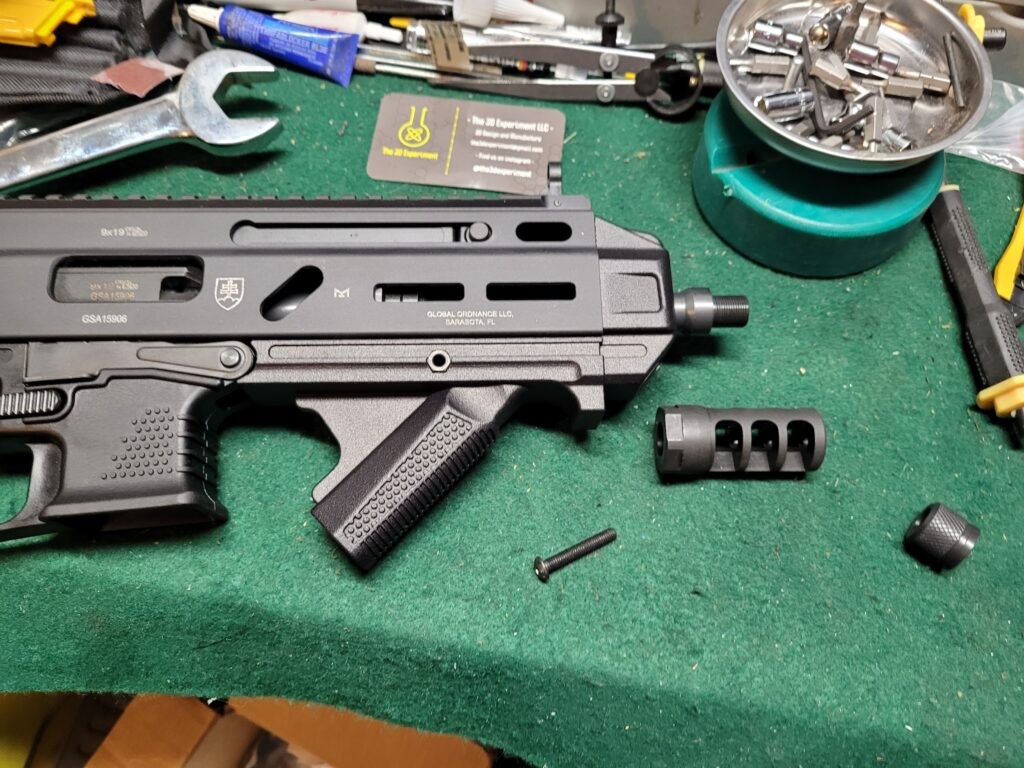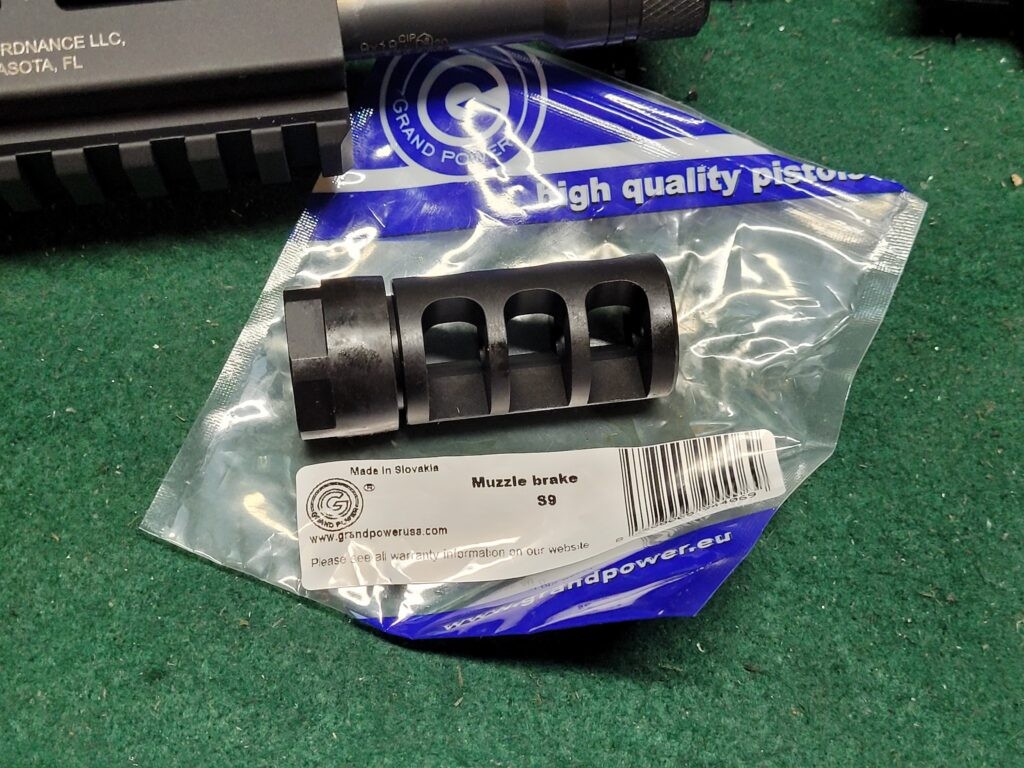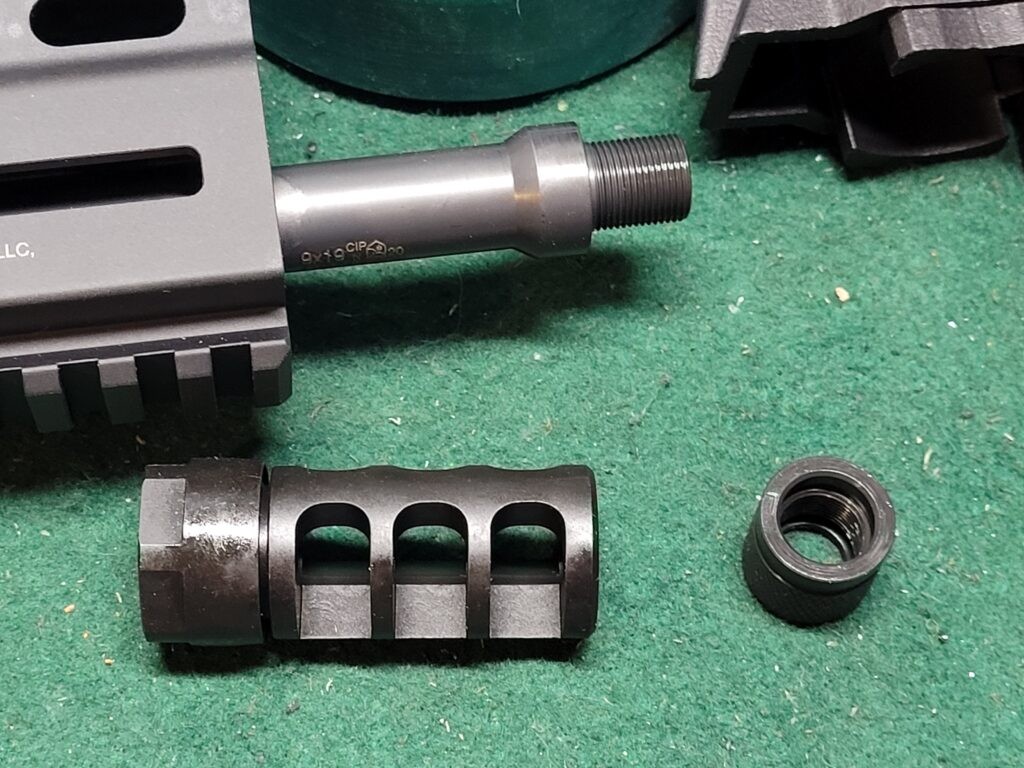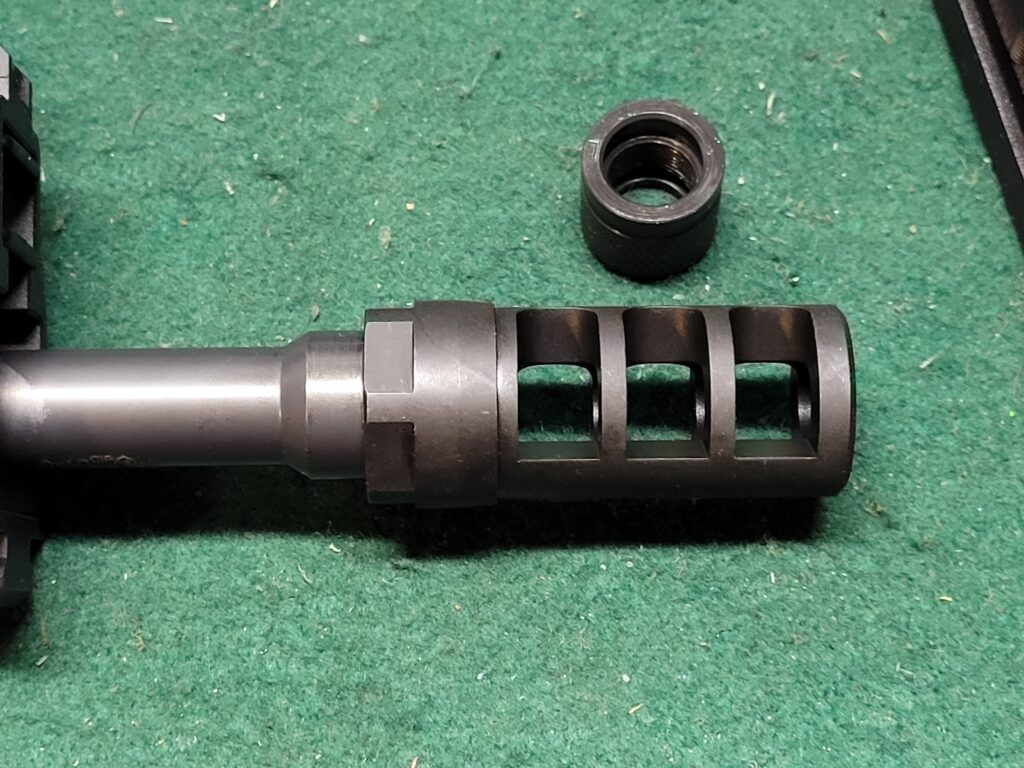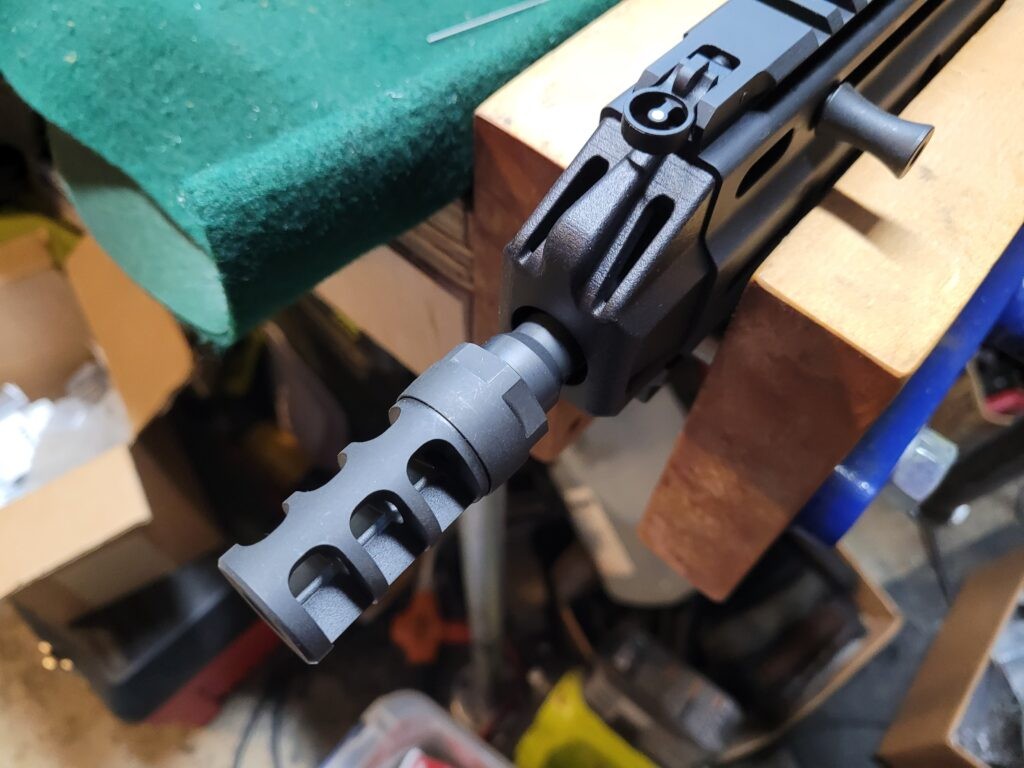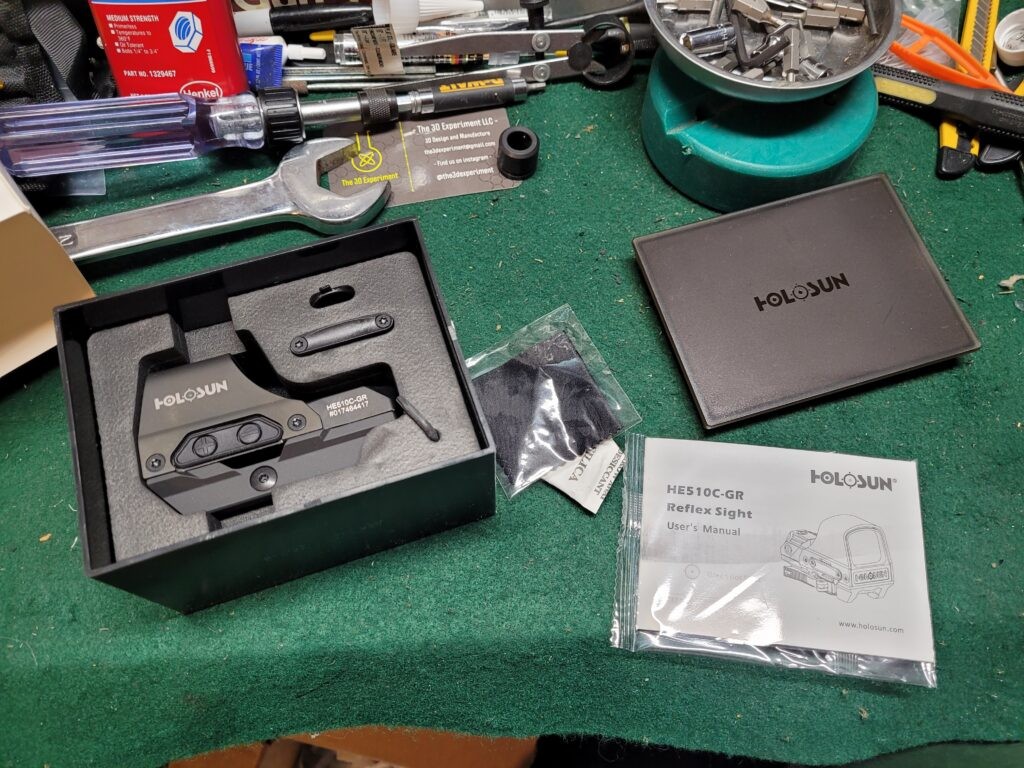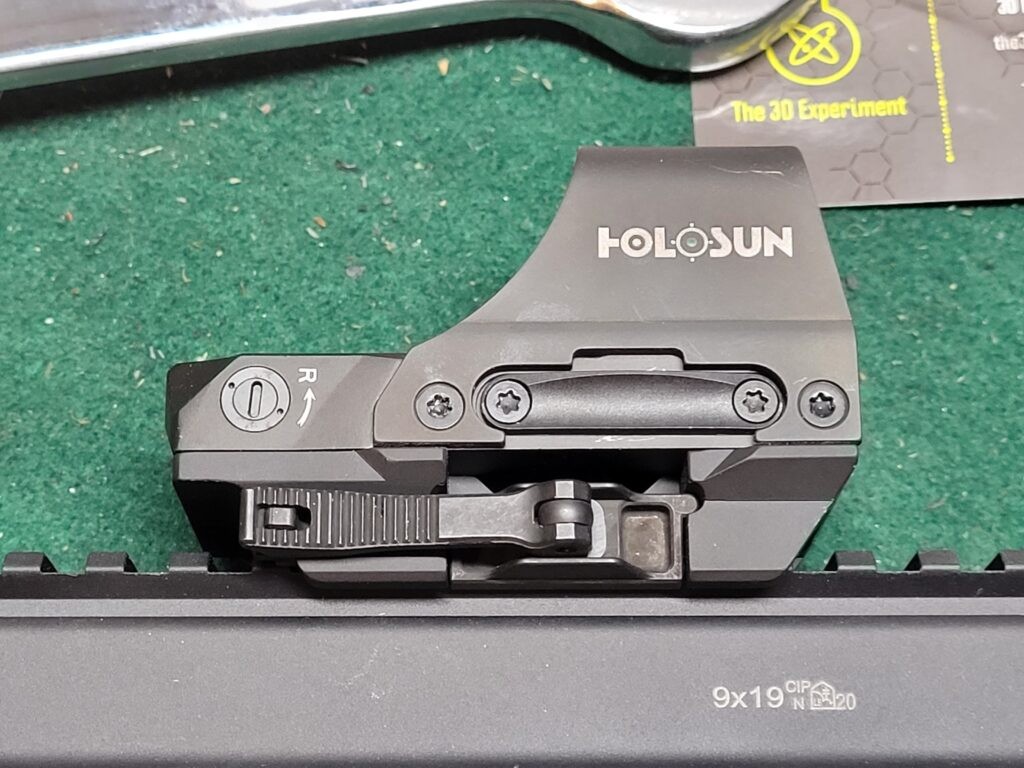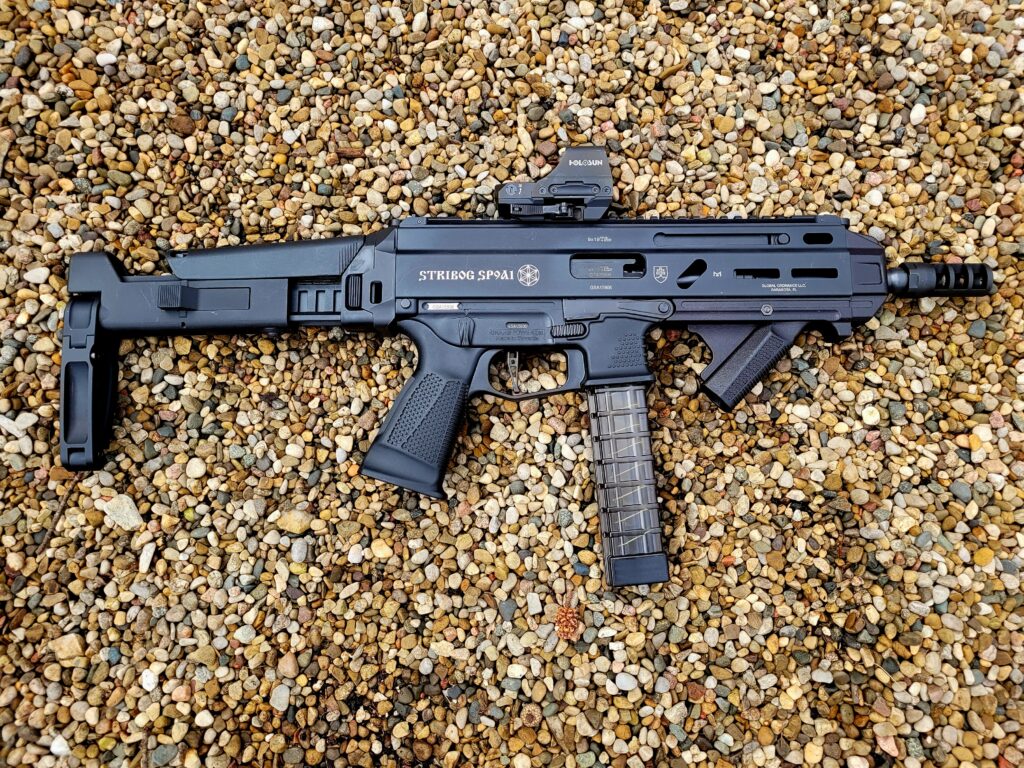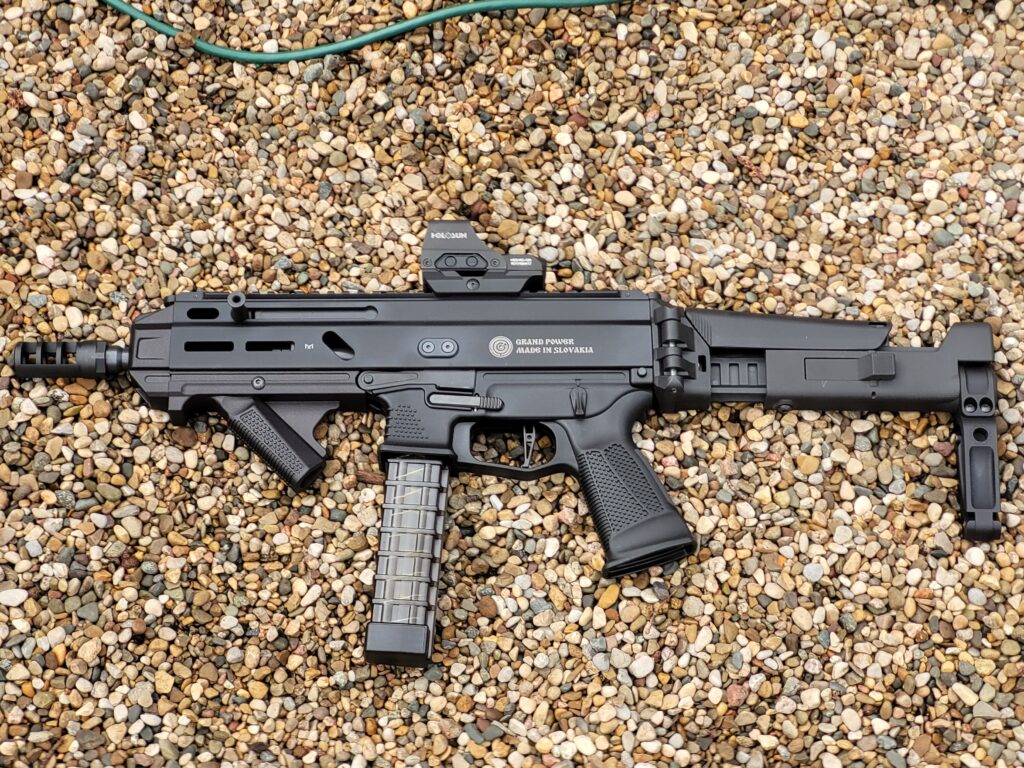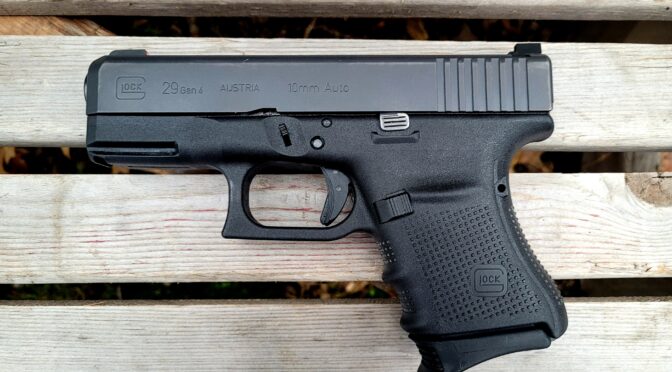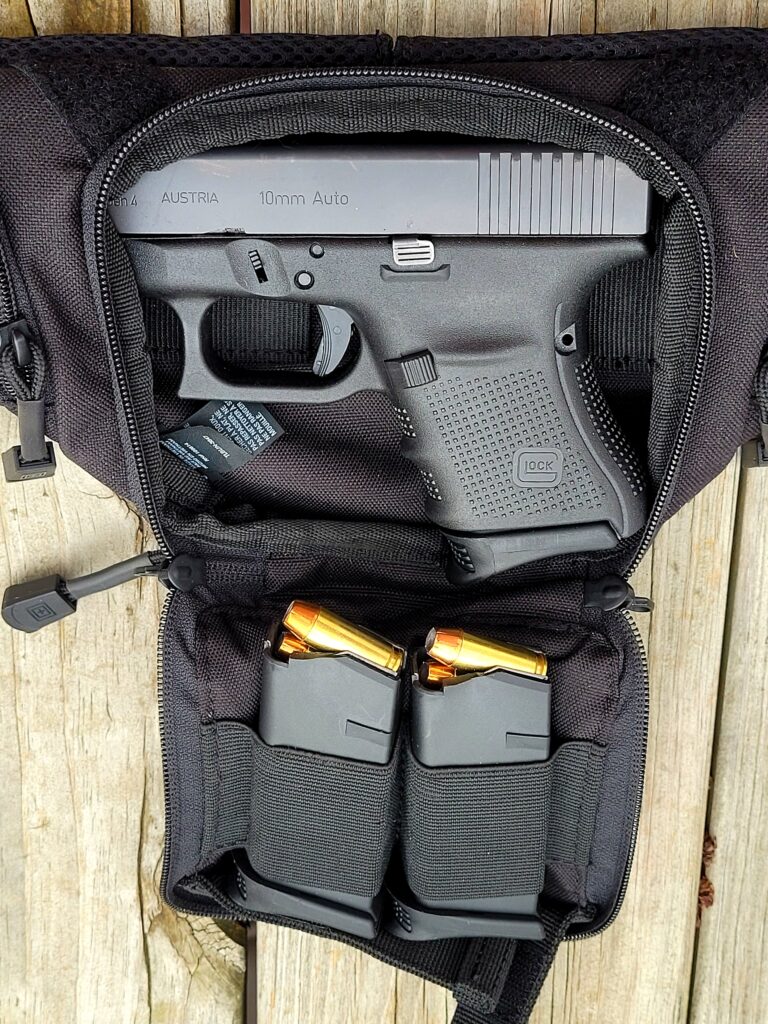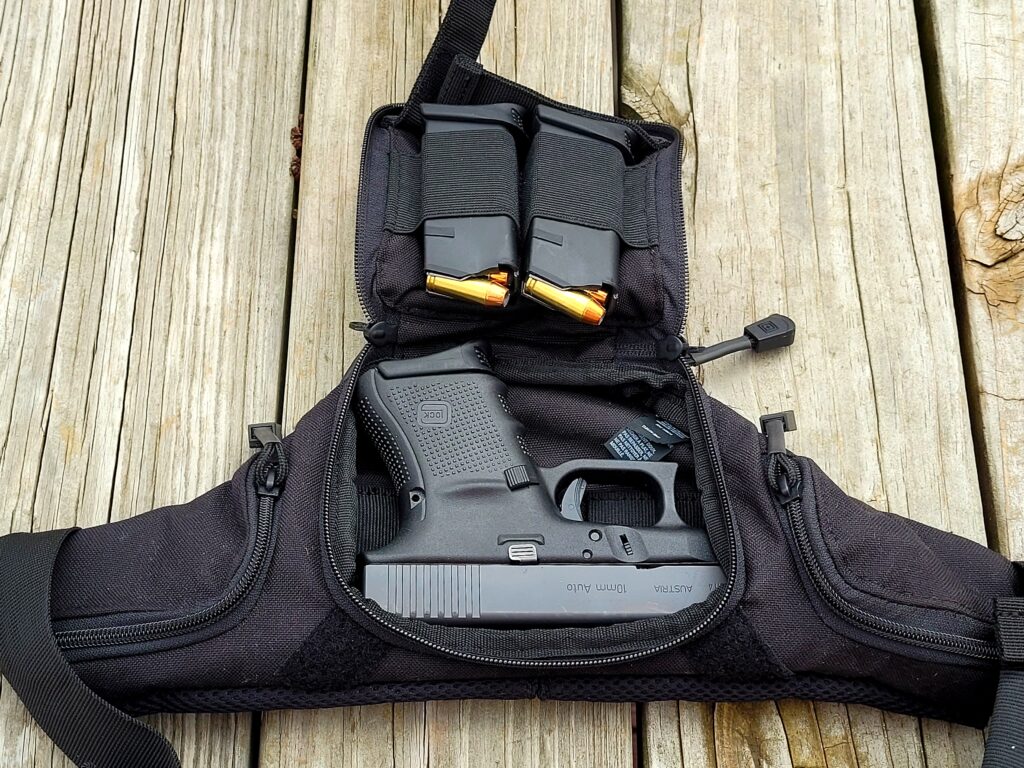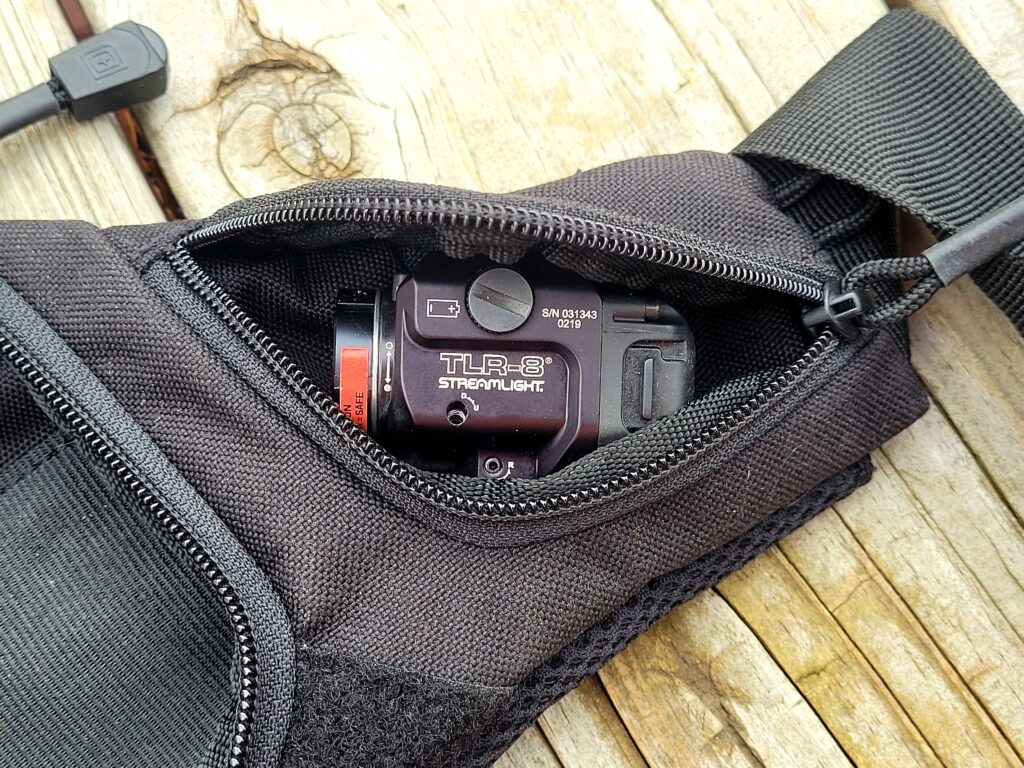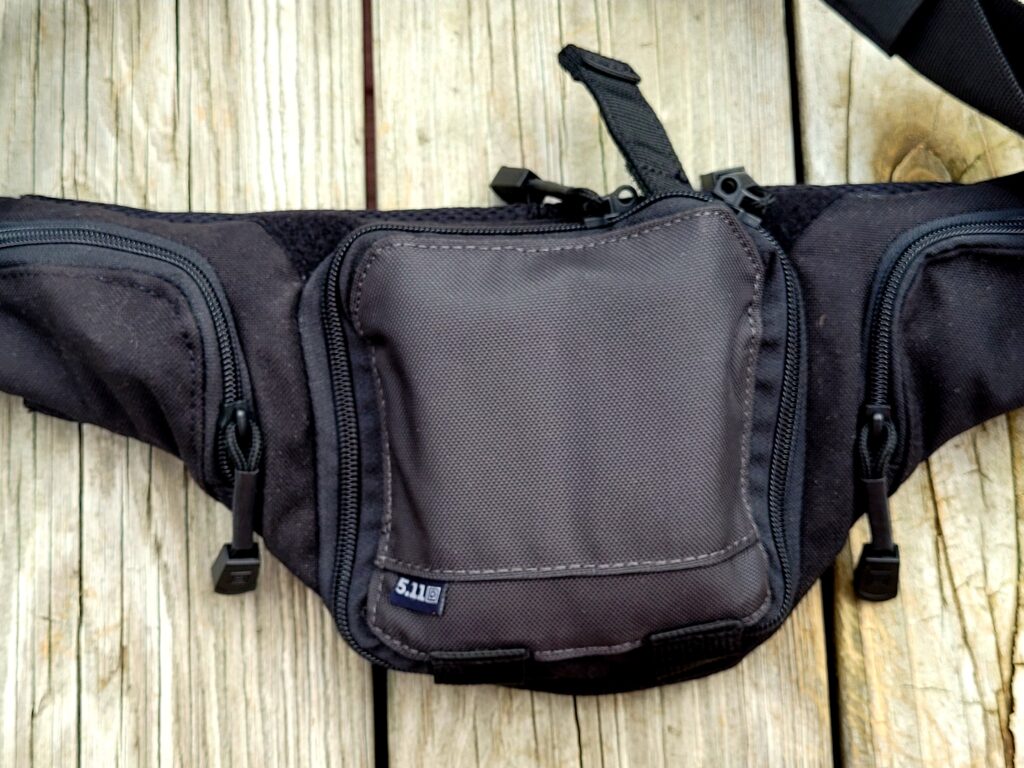The 10mm Automatic cartridge, once a niche caliber on the verge of commercial obsolescence, is undergoing a significant renaissance in the United States firearms market. This report provides a comprehensive analysis of this resurgence, identifying the top 20 most popular firearms chambered for the cartridge and the key market dynamics driving their success. After decades as a cult classic, the 10mm Auto has firmly established itself in several key market segments, transitioning from a failed law enforcement experiment into a premier choice for discerning civilian shooters.
The primary drivers of this market expansion are threefold. First and foremost is the 10mm’s ascendance as the preeminent semi-automatic cartridge for backcountry defense. In regions with large, potentially dangerous predators, consumers are increasingly choosing 10mm handguns over traditional large-caliber revolvers, valuing the significant increase in magazine capacity and the speed of reloading offered by a semi-automatic platform.1
Second, the cartridge has carved out a substantial and growing niche in handgun hunting, where its combination of high velocity, flat trajectory, and substantial muzzle energy makes it an effective and ethical choice for medium-sized game like deer and wild hogs at appropriate distances.3
Finally, the 10mm possesses a powerful enthusiast and tactical appeal. Its unique history, association with firearms legend Jeff Cooper, and its brief but storied adoption by the FBI have created an enduring mystique. This “enthusiast mindshare” is rooted in its objective performance as one of the most powerful semi-automatic pistol cartridges available, offering magnum-level energy in a modern platform.3
A critical catalyst for this resurgence has been modern firearm engineering. Advancements in polymer frame technology, integrated steel chassis systems, and improved ergonomics have made the potent cartridge’s recoil far more manageable for a broader range of shooters.6 This has democratized the 10mm, moving it beyond the realm of “experts only” and into the mainstream. Paradoxically, the market decline of its derivative cartridge, the.40 S&W, has also cleared a path for the 10mm’s success. As the.40 S&W lost favor in law enforcement and became viewed by many enthusiasts as a compromise, the 10mm re-emerged as the authentic, “full-power” parent cartridge, attracting consumers seeking maximum performance.3
Our analysis indicates that the current market is dominated by modern, high-capacity, polymer-framed, striker-fired pistols, with the Glock 20 platform serving as the long-standing benchmark for reliability and market penetration. However, the 1911 platform maintains a powerful hold, particularly within the handgun hunting segment, while pistol-caliber carbines (PCCs) represent the fastest-growing and most dynamic segment, unlocking the cartridge’s full ballistic potential.
Summary Ranking of Top 20 10mm Auto Firearms
The following table presents a synthesized ranking of the 20 most popular 10mm Auto firearms in the U.S. market. The ranking is derived from a proprietary composite model detailed in the Appendix.
| Rank | Model | Manufacturer | Firearm Type | Action Type | Primary Market Role | Key Popularity Driver(s) | Total Mention Index | % Positive Sentiment | % Negative Sentiment |
| 1 | Glock 20 (Gen4/5) | Glock | Handgun | Striker-Fired | Backcountry Defense | Reliability Benchmark, Aftermarket Support | 100 | 92% | 8% |
| 2 | Smith & Wesson M&P 10mm M2.0 | Smith & Wesson | Handgun | Striker-Fired | Backcountry Defense | Superior Ergonomics, Strong Value | 91 | 95% | 5% |
| 3 | Glock 40 MOS | Glock | Handgun | Striker-Fired | Handgun Hunting | Long-Slide Performance, Optics-Ready | 88 | 94% | 6% |
| 4 | SIG Sauer P320-XTEN | SIG Sauer | Handgun | Striker-Fired | Tactical/Enthusiast | Recoil Mitigation, Modularity | 85 | 90% | 10% |
| 5 | Springfield Armory XD-M Elite | Springfield Armory | Handgun | Striker-Fired | Tactical/Enthusiast | High-End Features, Competitive Price | 82 | 93% | 7% |
| 6 | Colt Delta Elite | Colt | Handgun | SAO | Tactical/Enthusiast | Cultural Icon, Brand Legacy | 79 | 88% | 12% |
| 7 | CMMG Banshee Mk10 | CMMG | Pistol-Caliber Carbine | Delayed Blowback | Tactical/Enthusiast | Premium Performance, Low Recoil | 75 | 97% | 3% |
| 8 | FN 510 Tactical | FN America | Handgun | Striker-Fired | Tactical/Enthusiast | Class-Leading Capacity, “Tactical” Features | 72 | 94% | 6% |
| 9 | Dan Wesson Bruin / Kodiak | Dan Wesson | Handgun | SAO | Handgun Hunting | Premium Quality, Hunting-Specific Features | 68 | 98% | 2% |
| 10 | Glock 29 | Glock | Handgun | Striker-Fired | Concealed Carry | Compact Power, Deep Concealment | 65 | 85% | 15% |
| 11 | Kimber Rapide Series | Kimber | Handgun | SAO | Tactical/Enthusiast | Custom Aesthetics, Brand Recognition | 62 | 87% | 13% |
| 12 | SIG Sauer P220 Legion (DA/SA & SAO) | SIG Sauer | Handgun | DA/SA or SAO | Tactical/Enthusiast | All-Steel Construction, Soft Shooting | 58 | 96% | 4% |
| 13 | Kriss Vector Gen II | Kriss USA | Pistol-Caliber Carbine | Delayed Blowback | Tactical/Enthusiast | Unique Aesthetics, Recoil Mitigation | 55 | 92% | 8% |
| 14 | Springfield Armory Ronin 1911 | Springfield Armory | Handgun | SAO | Tactical/Enthusiast | Classic Styling, Strong Value | 52 | 91% | 9% |
| 15 | Rock Island Armory TAC Ultra / Rock Ultra | Rock Island Armory | Handgun | SAO | Tactical/Enthusiast | Unmatched Value, Feature-Packed | 50 | 89% | 11% |
| 16 | Ruger LC Carbine | Ruger | Pistol-Caliber Carbine | Blowback | Backcountry Defense | Lightweight, Takedown/Folding Design | 47 | 93% | 7% |
| 17 | Ruger GP100 Match Champion | Ruger | Handgun | Revolver | Handgun Hunting | Revolver Reliability, Ammo Versatility | 44 | 95% | 5% |
| 18 | Smith & Wesson Model 610 | Smith & Wesson | Handgun | Revolver | Handgun Hunting | N-Frame Strength, Classic Design | 41 | 96% | 4% |
| 19 | Dan Wesson Specialist | Dan Wesson | Handgun | SAO | Tactical/Enthusiast | Duty-Grade Premium 1911 | 38 | 99% | 1% |
| 20 | Hi-Point 1095TS | Hi-Point Firearms | Pistol-Caliber Carbine | Blowback | Tactical/Enthusiast | Extreme Low Cost, Accessibility | 35 | 75% | 25% |
Detailed Market Segment Analysis
The 10mm Auto market is not monolithic; it is comprised of several distinct segments, each with its own leading products, consumer profiles, and value propositions. The following analysis examines these segments to provide a granular understanding of the competitive landscape.
The Polymer Vanguard: Modern Striker-Fired Dominance
The rise of the 10mm Auto from niche cartridge to mainstream powerhouse is inextricably linked to the development of modern, high-capacity, polymer-framed pistols. These firearms solved the two primary issues that historically plagued the 10mm: low capacity in 1911-style frames and the punishing recoil that early all-steel designs struggled to mitigate effectively without excessive weight. Today, this segment represents the largest portion of the 10mm market, driven by the demand for reliable, high-capacity sidearms for backcountry defense and tactical applications.
The competitive dynamic within this segment illustrates a maturing market. While Glock established the foundational template of a reliable, high-capacity polymer 10mm, its primary competitors have found success not by cloning this template, but by systematically addressing its perceived weaknesses. This has led to a market where consumers can select a firearm based on nuanced preferences for ergonomics, recoil impulse, or factory-installed features, rather than just basic functionality. Smith & Wesson directly targets Glock’s ergonomics, SIG Sauer competes on recoil mitigation, and both Springfield Armory and FN focus on delivering a more complete, feature-rich package out of the box. This evolution from a utility-driven to a performance-driven market signals the 10mm’s firm establishment in the consumer consciousness.
Glock 20 (Gen4/Gen5)
The Glock 20 is, without exaggeration, the firearm that saved the 10mm Auto from commercial failure. Introduced in 1990, it provided a platform that was both affordable and, most importantly, durable enough to withstand a steady diet of full-power 10mm ammunition—something early 1911s struggled with.5 For nearly three decades, it was the default choice for anyone seeking a high-capacity 10mm, establishing itself as the undisputed benchmark for reliability and durability in the category.1
Its market dominance is driven by this reputation for “plug-and-play” reliability; it is known to function flawlessly with a vast range of ammunition, from lighter range loads to heavy, hard-cast hunting and defensive rounds.10 This proven performance has made it the go-to choice for backcountry defense, famously being adopted by Denmark’s elite Slaedepatruljen Sirius (Sirius Sled Patrol) for defense against polar bears.2 Furthermore, the Glock 20 benefits from the most extensive aftermarket in the industry, allowing for limitless customization.
Common criticisms center on its ergonomics, with the large, blocky grip of the double-stack frame being uncomfortable for shooters with smaller hands, and its standard polymer sights, which are often the first component owners replace.11 Despite these points, its overwhelming reputation for being an indestructible workhorse secures its position at the top of the market.
Smith & Wesson M&P 10mm M2.0
Launched in late 2021, the Smith & Wesson M&P 10mm M2.0 was a highly anticipated entry that immediately established itself as the Glock 20’s most significant challenger.1 Smith & Wesson leveraged the success of its M&P M2.0 platform, directly addressing the Glock’s primary weaknesses to create a compelling alternative.
The M&P 10mm’s key strength is its superior ergonomics. It features the M&P line’s signature 18-degree grip angle, which many shooters find more natural than Glock’s more aggressive angle, and includes four interchangeable palm-swell backstraps to customize the fit to the user’s hand.13 The frame’s aggressive texturing provides a secure grip, essential for managing 10mm recoil. Internally, the polymer frame is reinforced with a rigid extended stainless-steel chassis, designed specifically to reduce frame flex and enhance durability under the stress of the 10mm cartridge.7
Reviewers consistently praise the M&P 10mm for its excellent factory trigger, which is widely considered superior to the standard Glock trigger, and its optics-mounting system, which ships with a full suite of adapter plates for a wide variety of red dots.11 By offering superior ergonomics and a better out-of-the-box trigger at a competitive price point, the M&P 10mm has rapidly captured significant market share from consumers who appreciate the Glock concept but desire more refinement.
Glock 40 MOS
The Glock 40 MOS (Modular Optic System) is Glock’s purpose-built handgun hunting platform. It takes the proven G20 frame and pairs it with a long slide and a 6-inch barrel.1 This configuration offers several distinct advantages for hunters. The longer barrel increases muzzle velocity, extracting maximum performance and energy from the 10mm cartridge, which translates to a flatter trajectory and more effective terminal ballistics on game. The extended slide provides a longer sight radius, which inherently improves practical accuracy with iron sights.
However, the key feature is the MOS cut in the slide, which allows for the easy mounting of a red dot sight.14 This is a critical feature for handgun hunters, as a red dot allows for more precise aiming at extended ranges compared to traditional iron sights, increasing the effective and ethical range of the firearm.9 The combination of the G20’s legendary reliability, the ballistic advantages of the long slide, and its optics-ready nature has made the G40 MOS the dominant choice in the semi-automatic handgun hunting market.15
SIG Sauer P320-XTEN
The SIG Sauer P320-XTEN is a testament to the modularity of the P320 platform and a direct appeal to the enthusiast market. SIG Sauer scaled up its P320 system to accommodate the 10mm cartridge, focusing on two key areas: ergonomics and recoil management.16 The XTEN utilizes the X-series grip module, which is widely praised for being more comfortable and less “blocky” than the Glock 20’s grip, making the high-capacity 10mm accessible to a wider range of hand sizes.10
Its standout feature, particularly in compensated models, is its remarkably soft-shooting nature. The combination of the grip ergonomics, slide mass, and (in some models) an integrated expansion chamber compensator makes the recoil impulse feel significantly tamer than its competitors, often compared to shooting a 9mm +P rather than a full-power 10mm.10 This appeals strongly to shooters who are recoil-sensitive or who prioritize rapid follow-up shots. The P320’s removable Fire Control Unit (FCU) also offers a degree of modularity not found elsewhere. The primary criticism involves its direct-mount optics system, which, while robust, limits the user to SIG Sauer or Leupold DeltaPoint Pro footprints without adapter plates.10
Springfield Armory XD-M Elite
The Springfield Armory XD-M Elite series has built a reputation for offering a high level of performance and features at a very competitive price, and the 10mm models are no exception. The XD-M Elite is positioned as a direct competitor to both the Glock 20 and S&W M&P 10mm, appealing to shooters who want a “fully upgraded” pistol from the factory.
Its key selling point is the Match Enhanced Trigger Assembly (META), which provides a flat-faced trigger with a clean break and short reset that is among the best in the striker-fired class.11 It also boasts a standard capacity of 16+1 rounds, a slight edge over the 15-round standard of its main competitors. Other features like an ambidextrous magazine release, a grip safety, and aggressive slide serrations round out a package that feels premium.17 The platform’s durability is well-documented, with Springfield having subjected an XD-M 10mm to a 10,000-round torture test with no malfunctions.17 This combination of a superb trigger, high capacity, and proven reliability makes it a formidable option in the polymer-framed segment.
FN 510 Tactical
The FN 510 Tactical is one of the newest major entries into the 10mm market and is positioned as a premium, “no-compromise” tactical pistol.5 Based on the successful FN 509 platform, it brings a host of high-end features to the table. Its most notable feature is its class-leading magazine capacity, shipping with both a standard 15-round magazine and an extended 22-round magazine.16
The “Tactical” designation is well-earned. The pistol comes standard with a 4.71-inch threaded barrel for mounting suppressors or compensators, suppressor-height tritium night sights, and FN’s highly regarded low-profile optics mounting system, which uses a series of plates and inserts to provide a secure, co-witnessing fit for a wide range of red dots.18 The ergonomics are excellent, and the controls are fully ambidextrous. The FN 510 Tactical appeals to the enthusiast who wants a complete, mission-ready package right out of the box without the need for any aftermarket upgrades. Its primary drawback is its higher price point compared to its main competitors.
Glock 29
The Glock 29 has long dominated the subcompact 10mm niche, offering the full power of the cartridge in a package small enough for concealed carry.1 It is essentially a scaled-down Glock 20, sharing its reputation for absolute reliability and durability.19 For individuals seeking a potent defensive firearm for either urban or backcountry environments where concealability is a factor, the G29 is often the only viable choice. It can also accept the larger 15-round magazines from the G20, offering increased capacity and a fuller grip when needed.10
The trade-offs, however, are significant. The combination of a powerful cartridge in a small, lightweight pistol results in a substantial and challenging recoil impulse that requires significant practice to master.21 The short grip provides little purchase for the shooter’s pinky finger, which can exacerbate control issues, though aftermarket magazine extensions can mitigate this. Despite the sharp recoil, its unique position as a reliable, concealable 10mm powerhouse ensures its continued popularity.19
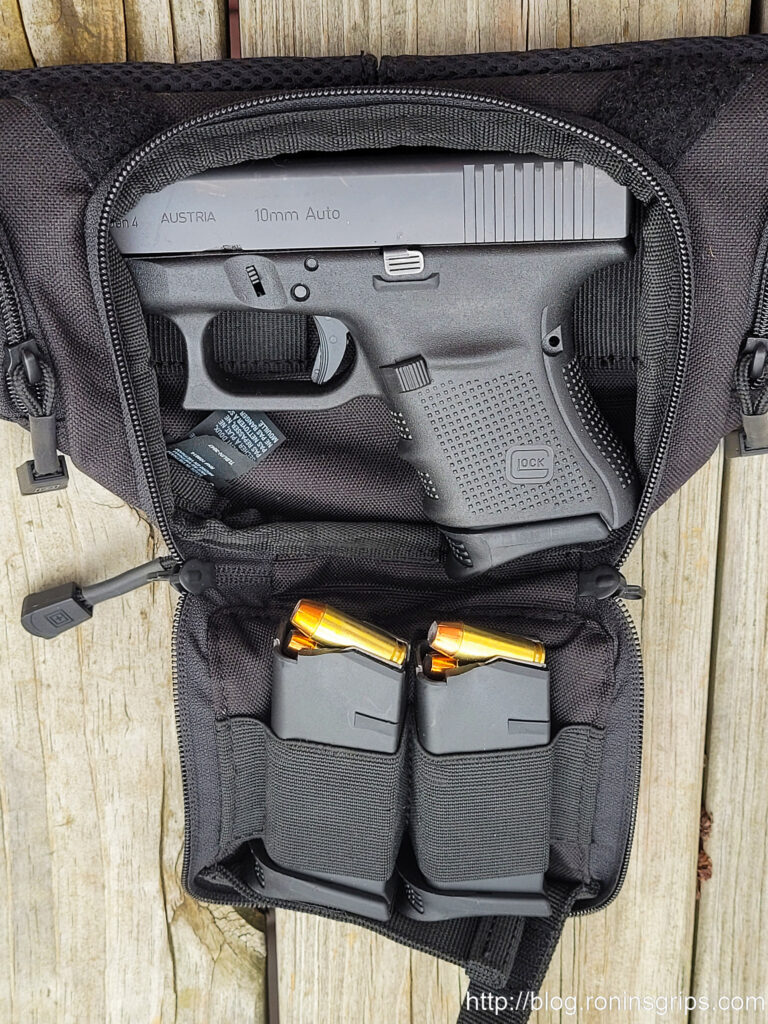
The Enduring Legend: The 1911 Platform
Despite the dominance of polymer-framed pistols, the M1911 platform maintains a deep and enduring appeal for 10mm shooters. This century-old design, championed by Jeff Cooper himself, offers an unparalleled trigger, excellent ergonomics for many shooters, and a timeless aesthetic. The market for 10mm 1911s is robust, catering to a wide spectrum of consumers from those seeking a premium, specialized hunting sidearm to those wanting an affordable, classic “big bore” plinker.
The single-action trigger of the 1911 is its most significant advantage in the 10mm space. For applications that demand the utmost mechanical accuracy, such as handgun hunting, the crisp, clean break of a good 1911 trigger is considered superior to any striker-fired or DA/SA alternative.10 This has led to a market bifurcation. At the high end, manufacturers like Dan Wesson produce specialized long-slide models purpose-built for hunters who prioritize precision over capacity. At the other end, companies like Rock Island Armory offer accessible, feature-rich models that allow a broader range of enthusiasts to experience the classic combination of the 1911 platform and the powerful 10mm cartridge.
Colt Delta Elite
The Colt Delta Elite is more than just a firearm; it is a cultural icon. Introduced in 1987, it was the first 10mm pistol offered by a major manufacturer and is widely credited with saving the cartridge from commercial extinction following the failure of the Bren Ten.3 For many years, the Delta Elite
was the 10mm market. Its popularity is deeply rooted in this historical significance and the power of the Colt brand.
Early models developed a reputation for being hard on their frames, with some instances of cracking due to the powerful cartridge.9 However, modern production Delta Elites have been significantly updated to address these issues. Key improvements include a dual recoil spring assembly to better absorb energy and protect the frame, an improved beavertail grip safety, and Novak sights.23 While it may lack some of the modern features of its competitors, its legacy, classic aesthetics, and the simple fact that it is the “original” 10mm 1911 give it a market position that transcends specifications alone.
Dan Wesson Bruin / Kodiak
Dan Wesson, a subsidiary of CZ-USA, occupies the premium tier of the production 1911 market. Their 10mm offerings, particularly the long-slide Bruin and Kodiak models, are purpose-built for the handgun hunter. These pistols feature 6-inch barrels, which maximize the velocity and energy of the 10mm cartridge while also providing a long sight radius for enhanced precision.22
These models are lauded for their exceptional build quality, featuring forged frames and slides with no metal injection molded (MIM) parts, a key selling point for discerning buyers.25 The fit and finish are meticulous, resulting in a smooth action and superb accuracy. Features like adjustable night sights, front strap checkering, and premium G10 grips are standard. The Dan Wesson line appeals to the serious hunter or enthusiast who is willing to pay a premium for top-tier craftsmanship and performance tailored specifically for the field.
Kimber Rapide Series
Kimber holds a significant share of the mid-to-high-end 1911 market, and their extensive 10mm lineup is a major contributor to this. Kimber’s strategy focuses on offering a wide variety of models with distinctive, “custom-style” aesthetics at production prices. The Rapide series, with its aggressive slide lightening cuts, stepped cocking serrations, and unique grip patterns, is a prime example of this approach.26
These firearms appeal to the buyer who values visual appeal as much as performance. They come well-appointed from the factory with features like tritium night sights, G10 grips, and high-quality finishes. While Kimber faced some criticism in the past regarding quality control, modern production is generally held in high regard, and the brand’s strong market presence and vast product catalog ensure its popularity among 10mm 1911 enthusiasts.27
Springfield Armory Ronin 1911
Springfield Armory offers a range of 10mm 1911s that effectively bridge the gap between the value-oriented offerings of Rock Island Armory and the premium models from Dan Wesson. The Springfield Armory Ronin is a particularly popular model that emphasizes classic styling and solid performance at an accessible price point.
The Ronin features a two-tone finish, with a stainless steel frame and a blued carbon steel slide. It eschews some of the more “tactical” features like an accessory rail for a cleaner, more traditional look. It comes standard with quality components like a forged frame and slide, a match-grade barrel, and fiber optic front sights.28 The Ronin appeals to the traditionalist who wants a well-built, reliable 10mm 1911 without the expense of higher-end models or the aggressive styling of many tactical offerings.
Rock Island Armory TAC Ultra / Rock Ultra
Rock Island Armory (RIA), manufactured by Armscor, is the undisputed value leader in the 1911 market. Their TAC Ultra and Rock Ultra series pistols in 10mm deliver a feature set that is unheard of at their price point. These models typically include a full-length guide rod, an adjustable rear sight, a high-visibility fiber optic front sight, a skeletonized hammer and trigger, an extended beavertail, ambidextrous safeties, and aggressive G10 grips.29
RIA has made the 10mm 1911 platform accessible to a vast segment of the market that would otherwise be priced out. While the fit and finish may not match that of a pistol costing three times as much, they have earned a strong reputation for ruggedness and reliability.29 For the budget-conscious enthusiast or someone looking for a solid “base gun” for a custom project, the value proposition of the RIA 10mm 1911 is impossible to ignore.
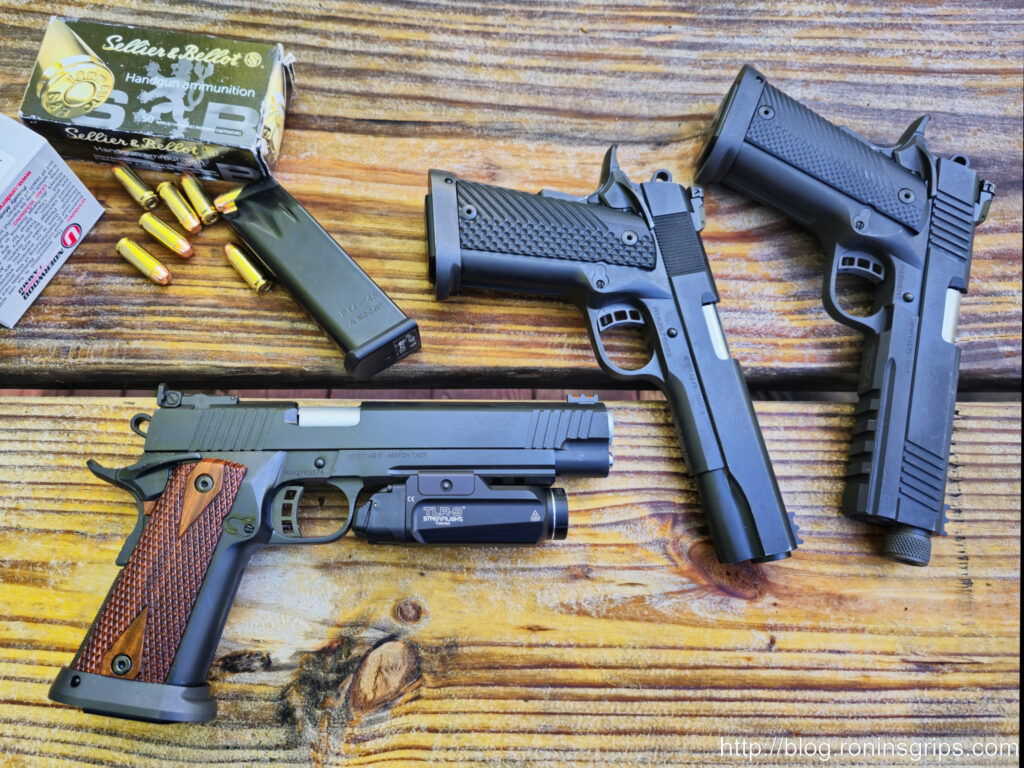
The Force Multipliers: Pistol-Caliber Carbines (PCCs)
The pistol-caliber carbine segment is one of the most dynamic and fastest-growing areas of the 10mm market. A PCC platform unleashes the full ballistic potential of the 10mm cartridge; the longer barrel (typically 8 to 16 inches) can increase muzzle velocity by 150-300 fps over a handgun, resulting in a significant boost in energy and a much flatter trajectory.30 This makes the 10mm PCC a formidable tool for home defense, tactical applications, and hunting small to medium-sized game.
A critical factor enabling this segment’s growth is the near-universal adoption of the Glock magazine pattern. Leading manufacturers like CMMG, Kriss, and Ruger have all designed their 10mm PCCs to feed from Glock 20/40 magazines.31 This creates a powerful ecosystem effect. A consumer who already owns a Glock 20 has a ready supply of magazines, dramatically lowering the cost and logistical barrier to purchasing a companion carbine. This cross-platform compatibility has made Glock magazine acceptance a near-mandatory feature for success in the 10mm PCC market and will likely stifle any new entry that attempts to introduce a proprietary magazine.
CMMG Banshee Mk10
The CMMG Banshee Mk10 is widely regarded as the top-tier, AR-pattern 10mm PCC. Its defining feature is CMMG’s innovative Radial Delayed Blowback operating system.30 Unlike simple blowback systems used in many PCCs, which require a heavy bolt and buffer to safely manage pressure, the Radial Delayed system uses a rotating bolt that momentarily delays the rearward travel of the bolt carrier group. This allows chamber pressures to drop, resulting in a significantly lighter bolt and buffer, and most importantly, a dramatic reduction in felt recoil and muzzle rise.30
The result is an exceptionally smooth and flat-shooting carbine that makes the powerful 10mm cartridge remarkably controllable. The Banshee also features a last-round bolt hold-open, full ambidextrous controls, and a high-quality fit and finish. Its use of Glock magazines and its superior operating system make it the premium choice for serious enthusiasts.30
Kriss Vector Gen II
The Kriss Vector is famous for its futuristic aesthetic and its unique Super V System, a non-linear, multilink, delayed blowback operating system that redirects recoil energy down and away from the shooter’s shoulder.34 This results in an extremely low bore axis and negligible muzzle climb, making the Vector one of the softest-shooting and fastest-firing PCCs on the market.34
In 10mm, the Super V system effectively tames the cartridge’s stout recoil, making it feel more like a 9mm carbine.35 Like the Banshee, it feeds from Glock magazines and is a favorite among tactical shooters and enthusiasts who appreciate its unique engineering and distinctive appearance. Its primary drawbacks are its higher price and unconventional ergonomics, which can take some getting used to.
Ruger LC Carbine
Ruger’s entry into the 10mm PCC market with the LC Carbine was met with significant positive reception. Leveraging the design of their successful Ruger-5.7 pistol and carbine, the 10mm LC Carbine offers a lightweight, reliable, and versatile package at a moderate price point.36
Key features include a folding, adjustable stock, a threaded barrel, and a full-length Picatinny rail for optics. It utilizes a simple and reliable blowback action and, crucially, feeds from Glock-pattern magazines.32 Its lightweight and foldable design make it an excellent choice for a “truck gun” or a compact backcountry carbine. The Ruger LC Carbine successfully occupies the middle ground of the market, offering a significant step up in quality and features from the budget options without the premium price of a CMMG or Kriss.
Hi-Point 1095TS
The Hi-Point 1095TS holds its place in the market for one simple reason: extreme affordability. It provides a functional and reliable 10mm carbine at a price that is often less than one-third of its nearest competitors.31 While it lacks the refinement, advanced features, and ergonomic comfort of other PCCs, it delivers on its core promise of a durable, American-made carbine that fires the 10mm cartridge.
It uses a simple blowback action and is known for being surprisingly durable, often carrying a lifetime, no-questions-asked warranty. Its primary weaknesses are its proprietary single-stack 10-round magazines, which are low-capacity and less reliable than Glock magazines, and its heavy, bulky, and often criticized aesthetics. Despite these flaws, its ultra-low price point makes the 10mm PCC category accessible to virtually any consumer.
Classic Designs & Niche Stalwarts: DA/SA and Revolvers
While the market is dominated by striker-fired and 1911-style pistols, a dedicated niche exists for firearms with more traditional actions. This segment caters to shooters who prefer the deliberate double-action first-shot pull of a DA/SA semi-automatic or the ultimate simplicity and reliability of a revolver. These firearms often appeal to experienced shooters and hunters who value specific mechanical attributes over raw capacity.
SIG Sauer P220 Legion (DA/SA & SAO)
The SIG Sauer P220 has a legendary reputation for accuracy and reliability, and the 10mm version builds upon this legacy. Unlike the polymer-framed P320-XTEN, the P220 is an all-metal pistol, with most models featuring a heavy stainless steel frame and slide.37 This substantial weight (often exceeding 44 ounces) makes the P220 an exceptionally soft-shooting 10mm handgun, absorbing a great deal of the recoil impulse.37
Available in both traditional DA/SA and SAO (single-action only) configurations, the P220 Legion models represent the pinnacle of the line, featuring an enhanced trigger, aggressive G10 grips, and superior sights. The P220 appeals to the enthusiast who appreciates the craftsmanship of an all-steel, hammer-fired pistol and is willing to trade high capacity (it uses single-stack 8-round magazines) and light weight for a supremely smooth and accurate shooting experience.
Ruger GP100 Match Champion & Smith & Wesson Model 610
The re-introduction of 10mm revolvers by major manufacturers like Ruger and Smith & Wesson speaks to the cartridge’s growing popularity in the hunting and outdoor communities. The Ruger GP100 Match Champion and the S&W Model 610 are robust, N-frame-sized revolvers that offer a unique set of advantages.1
Their primary strength is absolute reliability. A revolver is immune to the ammunition sensitivity that can sometimes affect semi-automatics; it will fire everything from very light “FBI Lite” loads to the heaviest, hard-cast bear loads with equal reliability.10 This makes them an extremely dependable choice for backcountry defense. A significant secondary advantage is the ability to also fire the less expensive and lighter-recoiling.40 S&W cartridge for practice, using the same moon clips required for the rimless 10mm Auto case.1 Their main disadvantages are their limited 6-round capacity and slower reload speed compared to a semi-automatic. These revolvers appeal to traditionalists and those who prioritize the ultimate in reliability and ammunition versatility for a hunting or trail sidearm.
Market Synthesis & Future Outlook
The comprehensive analysis of the U.S. 10mm Auto market reveals a cartridge that has not only survived but is now thriving by finding its true identity outside of its original law enforcement design parameters. Having successfully navigated a near-death experience in the 1990s, the 10mm has been reborn, propelled by a confluence of cultural mystique, consumer demand for higher performance, and critical advancements in firearms technology.
The 10mm Auto has definitively established itself as the new standard for outdoorsmen seeking a semi-automatic sidearm for backcountry defense and handgun hunting. It offers a superior solution to the traditional large-caliber magnum revolver, providing a significant increase in capacity, faster reloading capabilities, and a more modern, adaptable platform—all while delivering comparable terminal ballistics to the.41 Magnum.9 The market dominance of firearms like the Glock 20 and Smith & Wesson M&P 10mm in this role is a clear indicator of this paradigm shift. Consumers venturing into areas with potentially dangerous game are no longer limited to a six-shot revolver; they now have the option of a reliable semi-automatic with 15+1 rounds of potent, deep-penetrating ammunition.2
This mainstream acceptance would not have been possible without the catalyst of technological accessibility. The punishing recoil that led the FBI to abandon the full-power 10mm has been substantially tamed by modern engineering. Polymer frames with carefully designed ergonomics, internal steel chassis to absorb stress, and advanced recoil mitigation systems like those found in the SIG P320-XTEN and CMMG Banshee have made the cartridge manageable and even pleasant to shoot for a much broader audience.6 Furthermore, the now-standard inclusion of optics-ready slides has unlocked the cartridge’s long-range potential, particularly for hunters, solidifying its role as a precision tool.
Looking forward, several trends are likely to shape the 10mm market’s future. The pistol-caliber carbine segment is poised for continued and significant growth. As more shooters experience the dramatic increase in performance and controllability that a carbine platform offers, demand for models like the CMMG Banshee and Ruger LC Carbine will intensify. This platform truly maximizes the 10mm’s velocity and effective range, transforming it into a viable short-range rifle for defense and hunting. Competition in the polymer-framed handgun space will also continue to heat up, with new manufacturers likely to enter the market, further driving innovation in ergonomics and recoil reduction. Finally, as engineering continues to evolve, the development of more reliable and shootable compact or even “micro” 10mm pistols could emerge, further expanding the cartridge’s viability for concealed carry.
In conclusion, the 10mm Auto has successfully completed its transition from a niche, enthusiast-only cartridge to a multi-faceted commercial success with a secure and expanding market. Its future is firmly anchored by its undisputed performance as a premier hunting and wilderness defense caliber, while its legendary power and unique history will continue to fuel its enduring appeal to the serious firearms enthusiast.
Appendix: Methodology
The rankings and analysis presented in this report are the result of a proprietary composite scoring model designed to provide a holistic and data-driven view of a firearm’s popularity and position in the U.S. market. This methodology moves beyond simple sales figures to capture consumer interest, real-world user sentiment, and expert consensus, providing a more nuanced and accurate picture of the competitive landscape. The composite score for each firearm is calculated from four distinct data sources, each assigned a specific weight based on its relevance as a market indicator.
1. Social Media Sentiment & Volume (40% weight): This metric is the most heavily weighted as it serves as a powerful, real-time indicator of consumer mindshare, ongoing interest, and real-world user experience. The process involves the systematic analysis of discussion volume and qualitative sentiment on specialized, high-traffic online communities where knowledgeable enthusiasts congregate. Platforms include dedicated firearms forums and specialized subreddits such as Reddit’s r/10mm. Advanced analytics are used to quantify the frequency of mentions (volume) and classify the context of those mentions as positive, negative, or neutral (sentiment). A high volume of positive sentiment is a strong indicator of a product’s popularity and user satisfaction.
2. Sales Data & Rankings (30% weight): To ground the analysis in direct consumer purchasing behavior, this report incorporates publicly available sales data from major online firearms marketplaces, most notably GunBroker.com. This includes analyzing “Best Selling” charts and the relative velocity of sales for new and used firearms. This data provides a crucial, quantitative measure of what consumers are actively purchasing, complementing the discussion-based data from social media. 26
3. Expert & Influencer Reviews (20% weight): This metric captures the consensus from established, trusted sources within the firearms industry. The analysis includes a systematic review of published evaluations from leading print publications (e.g., American Rifleman, Guns & Ammo, Handguns Magazine) and influential, high-reach digital media channels (e.g., Hickok45, Gun University, Pew Pew Tactical). The focus is on identifying points of consensus regarding a firearm’s reliability, accuracy, ergonomics, and performance with a variety of ammunition loads under controlled testing conditions. This provides an essential layer of professional validation to the user-generated data. 11
4. Cultural Relevance (10% weight): This qualitative metric acts as a “popularity multiplier” to account for a firearm’s intangible mindshare and historical significance, which can drive long-term market presence beyond immediate sales figures or technical specifications. A model’s score is increased based on its status as a cultural icon (e.g., the Colt Delta Elite’s role in saving the 10mm cartridge) or its establishment as the definitive, go-to choice for a specific, high-profile application (e.g., the Glock 20’s reputation as the premier bear defense handgun). This factor acknowledges that a firearm’s story and reputation are integral components of its market popularity. 3
Data from each of these four sources is compiled and normalized to a common scale. The weighted average is then calculated to produce a final composite score, which determines the firearm’s rank in the Top 20 list.
Disclaimer: The rankings presented in this report reflect market popularity as determined by the proprietary methodology described above at the time of its creation. They are not a direct endorsement of any specific product or a definitive measure of absolute quality, but rather an analytical snapshot of the U.S. 10mm Auto firearms market.
If you find this post useful, please share the link on Facebook, with your friends, etc. Your support is much appreciated and if you have any feedback, please email me at in**@*********ps.com. Please note that for links to other websites, we are only paid if there is an affiliate program such as Avantlink, Impact, Amazon and eBay and only if you purchase something. If you’d like to directly contribute towards our continued reporting, please visit our funding page.
Sources Used
- A 10mm Resurgence? – Shooting Industry Magazine, accessed August 29, 2025, https://shootingindustry.com/dealer-advantage/a-10mm-resurgence/
- The Return Of The 10mm Auto – GUNS Magazine, accessed August 29, 2025, https://gunsmagazine.com/ammo/the-return-of-the-10mm-auto/
- 10mm Auto Facts and History: Why We Love It – Fenix Ammunition, accessed August 29, 2025, https://fenixammo.com/pages/10mm-auto-facts-and-history
- The 10mm Auto: History & Performance of a Potent Pistol Cartridge | An Official Journal Of The NRA – American Rifleman, accessed August 29, 2025, https://www.americanrifleman.org/content/the-10mm-auto-history-performance-of-a-potent-pistol-cartridge/
- The Perfect 10 – Guns and Ammo, accessed August 29, 2025, https://www.gunsandammo.com/editorial/the-perfect-10/501847
- Don’t Forget the Mighty 10mm – Winchester Ammunition, accessed August 29, 2025, https://winchester.com/Blog/2020/10/Dont-Forget-the-Mighty-10milly
- Smith’s Powerful Performance Center M&P 2.0 10mm Pistol: Review – Handguns, accessed August 29, 2025, https://www.handgunsmag.com/editorial/smith-performance-center-10mm-review/498620
- 10mm is BACK with a vengeance, but some folks just don’t get it. We break it down., accessed August 29, 2025, https://www.youtube.com/watch?v=g_1KjfDVhM0
- The 10 mm Auto: History & Performance | An Official Journal Of The NRA, accessed August 29, 2025, https://www.americanrifleman.org/content/the-10-mm-auto-history-performance/
- Best 10mm Handgun [2025 ] : Gun University, accessed August 29, 2025, https://gununiversity.com/best-10mm-handguns/
- The Best 10mm Handguns of 2025 | MeatEater Gear, accessed August 29, 2025, https://www.themeateater.com/gear/general/best-10mm-handguns
- I NEED to know, why would you buy a P320/P365 over a glock? Facts, opinions and passionate converstaion welcome. I want to pull the trigger on one but theres a deal for a glock near me that feels too good to pass up. : r/SigSauer – Reddit, accessed August 29, 2025, https://www.reddit.com/r/SigSauer/comments/1g4a7mg/i_need_to_know_why_would_you_buy_a_p320p365_over/
- Review: Smith & Wesson M&P M2.0 In 10 mm Auto | An Official …, accessed August 29, 2025, https://www.americanrifleman.org/content/review-smith-wesson-m-p-m2-0-in-10-mm-auto/
- 10mm Pistols | Price Match Guaranteed – Academy Sports, accessed August 29, 2025, https://www.academy.com/c/outdoors/shooting/firearms/handguns/handgun-caliber/10mm-pistols
- Glock 40 MOS 10mm Range Review – TheFireArmGuy – YouTube, accessed August 29, 2025, https://www.youtube.com/watch?v=iXTH0WETaN4
- Best 10mm Pistols & Handguns: Go Big or Go Home – Pew Pew Tactical, accessed August 29, 2025, https://www.pewpewtactical.com/best-10mm-handguns/
- Springfield Armory XD-M 10mm Pistols Review – Guns and Ammo, accessed August 29, 2025, https://www.gunsandammo.com/editorial/springfield-armory-xdm-10mm-review/367385
- FN 510 Tactical Review | Outdoor Life, accessed August 29, 2025, https://www.outdoorlife.com/guns/fn-510-tactical-review/
- Glock 29 Review [2025 Tested!] Sub Compact 10mm Protection, accessed August 29, 2025, https://gununiversity.com/glock-29-review/
- Review: Glock G29 10mm Pistol — Bad Things Roam at Night – The Shooter’s Log, accessed August 29, 2025, https://blog.cheaperthandirt.com/glock-g29-10mm-pistol-review/
- TOP 15 Best 10mm Pistols in 2025: Who Takes the Crown? – YouTube, accessed August 29, 2025, https://www.youtube.com/watch?v=8wYznmSHssw
- Dan Wesson Kodiak 1911 Review – Handguns, accessed August 29, 2025, https://www.handgunsmag.com/editorial/dan-wesson-kodiak-1911-review/372188
- Colt Delta Elite 10mm Rail Review & Range Test | Power Meets Precision! 113 – YouTube, accessed August 29, 2025, https://www.youtube.com/watch?v=GbItBNlcE_Q&pp=0gcJCRsBo7VqN5tD
- Colt Delta Elite 10mm 1911 Review :: Guns.com, accessed August 29, 2025, https://www.guns.com/news/reviews/colt-delta-elite-1911-10mm-review
- Dan Wesson Kodiak 10mm 1911 – On Target Magazine, accessed August 29, 2025, https://www.ontargetmagazine.com/2020/10/dan-wesson-kodiak-10mm-1911/
- Buy kimber 10mm Online at GunBroker.com, accessed August 29, 2025, https://www.gunbroker.com/pistol-ammunition/search?keywords=kimber+10mm
- Kimber’s 10mm Super Jägare – American Handgunner, accessed August 29, 2025, https://americanhandgunner.com/handguns/semi-auto-handguns/kimbers-10mm-super-jagare/
- 10mm Pistol for Sale | Buy Online at GunBroker, accessed August 29, 2025, https://www.gunbroker.com/10mm-pistol/search?keywords=10mm%20pistol&s=f
- Review: Rock Island Armory 10mm 1911 FS Pistol – The Shooter’s Log, accessed August 29, 2025, https://blog.cheaperthandirt.com/review-rock-island-armory-10mm-1911-fs-pistol/
- CMMG Banshee 10mm Review – Guns and Ammo, accessed August 29, 2025, https://www.gunsandammo.com/editorial/cmmg-banshee-10mm-review/367354
- 5 Best 10mm Carbines [2025] – Gun Made, accessed August 29, 2025, https://www.gunmade.com/best-10mm-carbines/
- Best 10mm Carbines [Tested] – Gun Digest, accessed August 29, 2025, https://gundigest.com/rifles/10mm-carbine-what-are-your-options
- Range Review: CMMG Banshee 10mm | An Official Journal Of The NRA, accessed August 29, 2025, https://www.shootingillustrated.com/content/range-review-cmmg-banshee-10mm/
- Kriss Vector Review [2025!] More Than a Gamer Gun! – Gun University, accessed August 29, 2025, https://gununiversity.com/kriss-vector-review/
- How the Kriss Vector Gen 2 SDP Perfectly Tames the 10mm Round – Athlon Outdoors, accessed August 29, 2025, https://athlonoutdoors.com/article/kriss-vector-gen-2-sdp-10mm-review/
- American Rifleman | National Rifle Association | NRA Publications, accessed August 29, 2025, https://www.nrapublications.org/reviews/american-rifleman/
- Tested: SIG Sauer P220 10 mm Pistol | An Official Journal Of The NRA, accessed August 29, 2025, https://www.americanrifleman.org/content/tested-sig-sauer-p220-10-mm-pistol/
- Review: Ruger 10mm GP100 Revolver – Unicorn Revo | RECOIL, accessed August 29, 2025, https://www.recoilweb.com/ruger-10mm-gp100-revolver-unicorn-revo-139071.html
- S&W’s Model 610 10mm Auto – American Handgunner, accessed August 29, 2025, https://americanhandgunner.com/handguns/revolvers/sws-model-610-10mm-auto/
- XDM Elite 10mm for Sale | Buy Online at GunBroker, accessed August 29, 2025, https://www.gunbroker.com/xdm-elite-10mm/search?keywords=xdm%20elite%2010mm&s=f&cats=3026
- Colt DELTA ELITE for Sale | Buy Online at GunBroker, accessed August 29, 2025, https://www.gunbroker.com/colt-delta-elite/search?keywords=colt%20delta%20elite&s=f
- 10mm vs 45 ACP – YouTube, accessed August 29, 2025, https://www.youtube.com/watch?v=ngoJVrqBBPM
- Firearms in Miami Vice – Wikipedia, accessed August 29, 2025, https://en.wikipedia.org/wiki/Firearms_in_Miami_Vice
- 9mm vs 10mm — Best for Bear Defense? – YouTube, accessed August 29, 2025, https://www.youtube.com/watch?v=We_aHSA2Pbc
